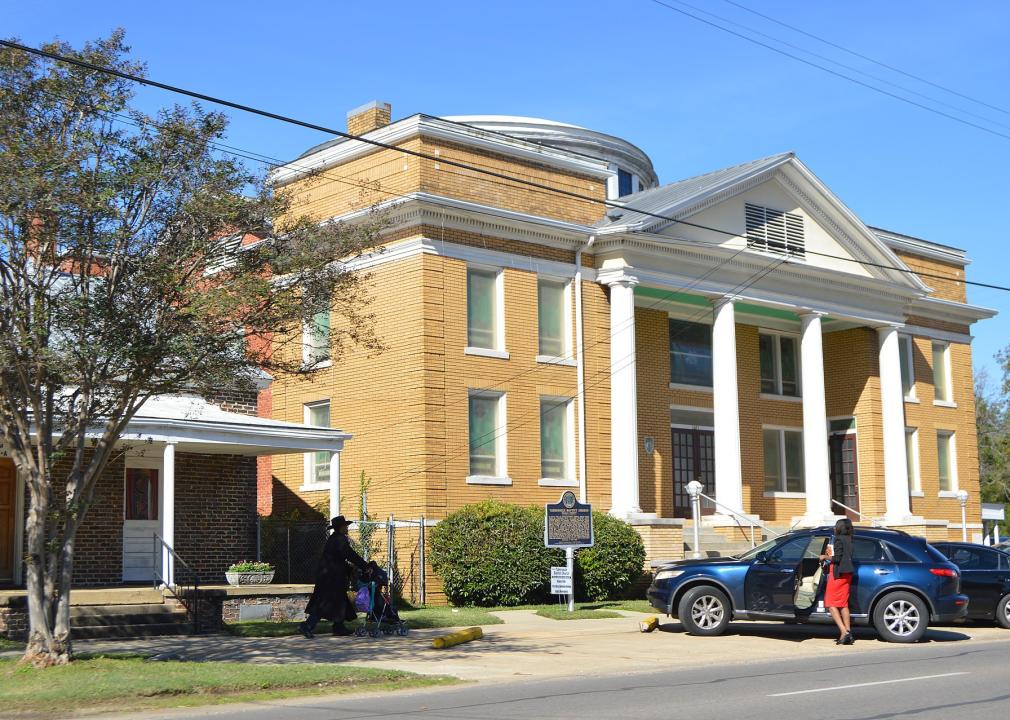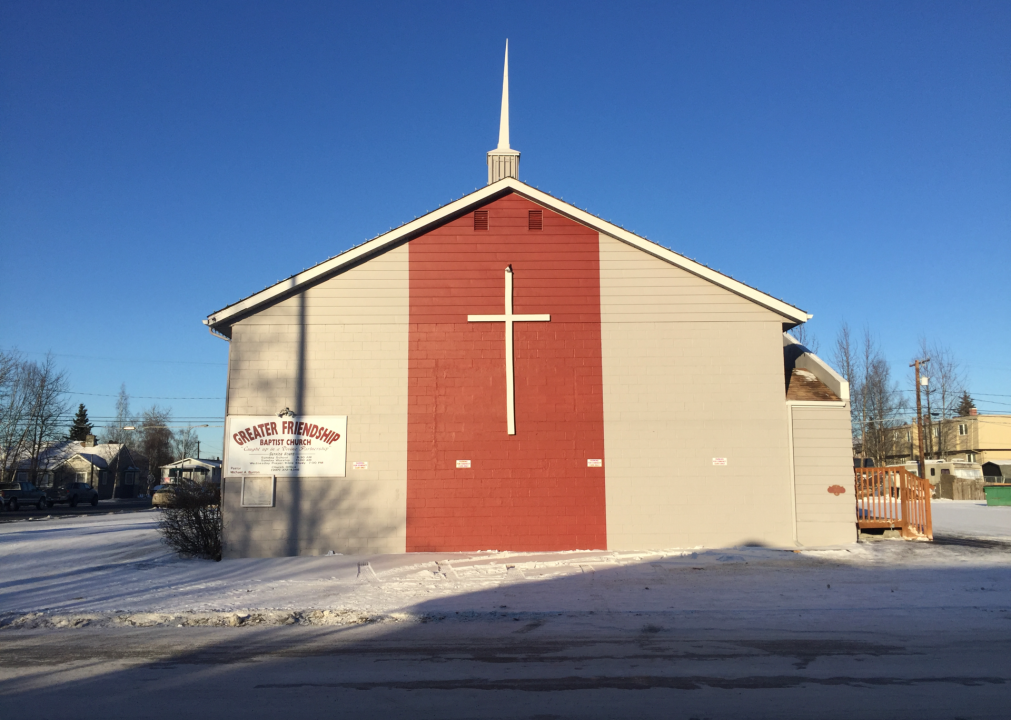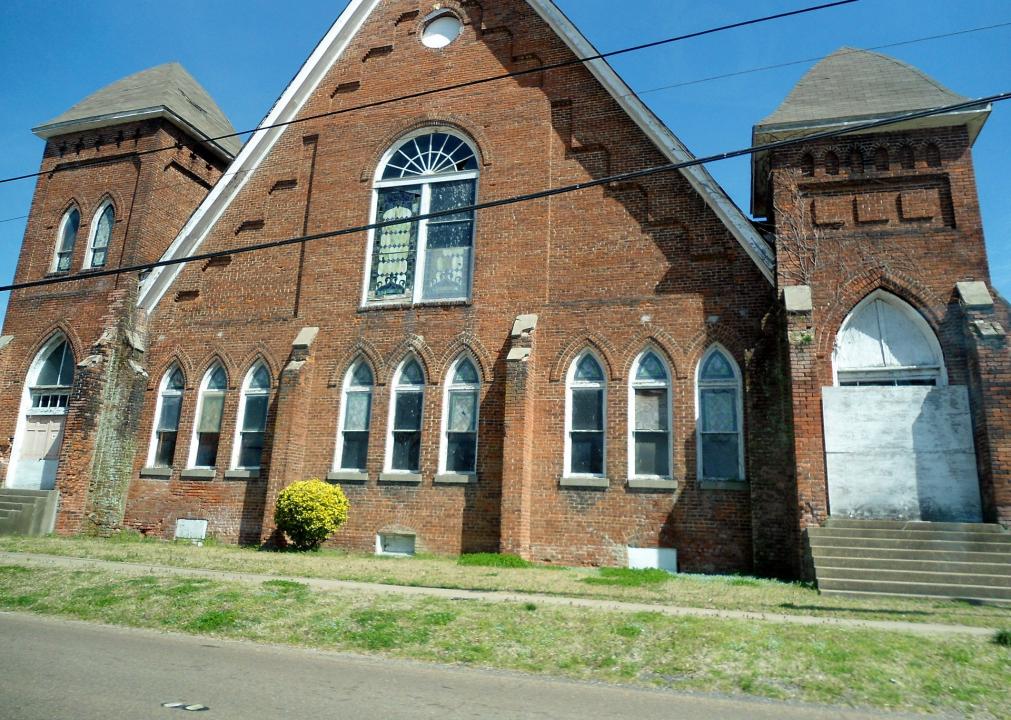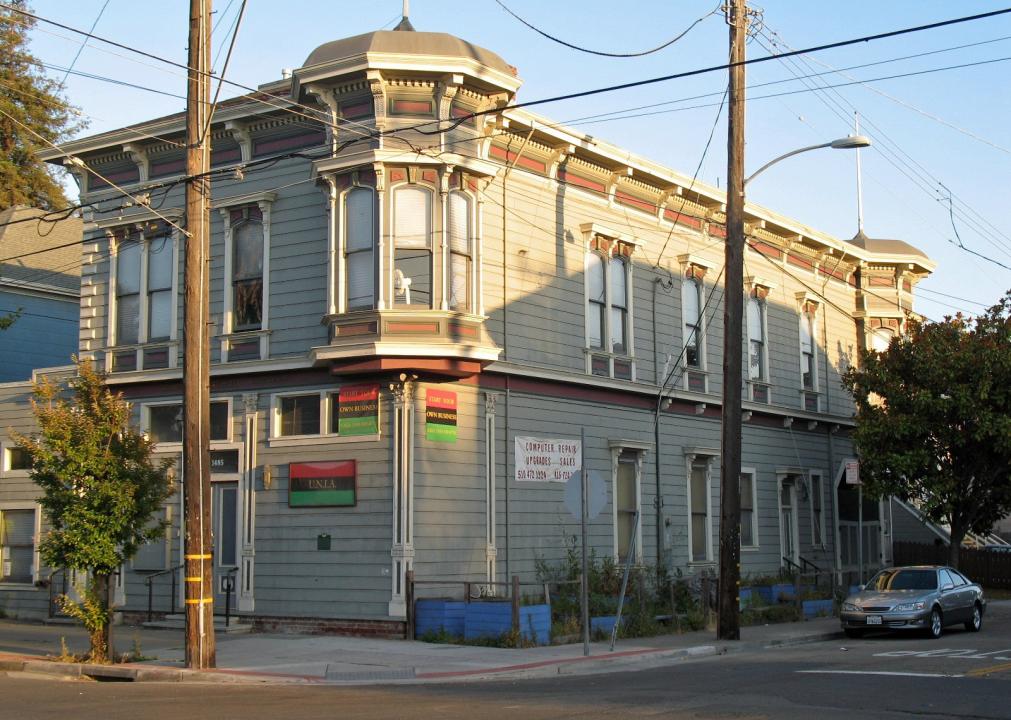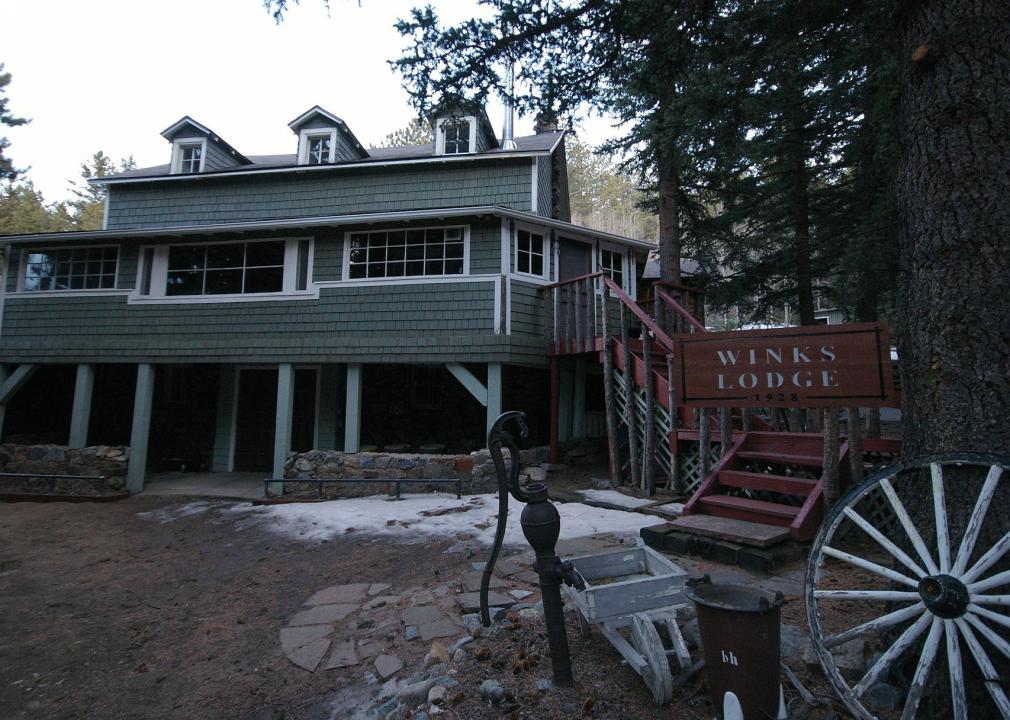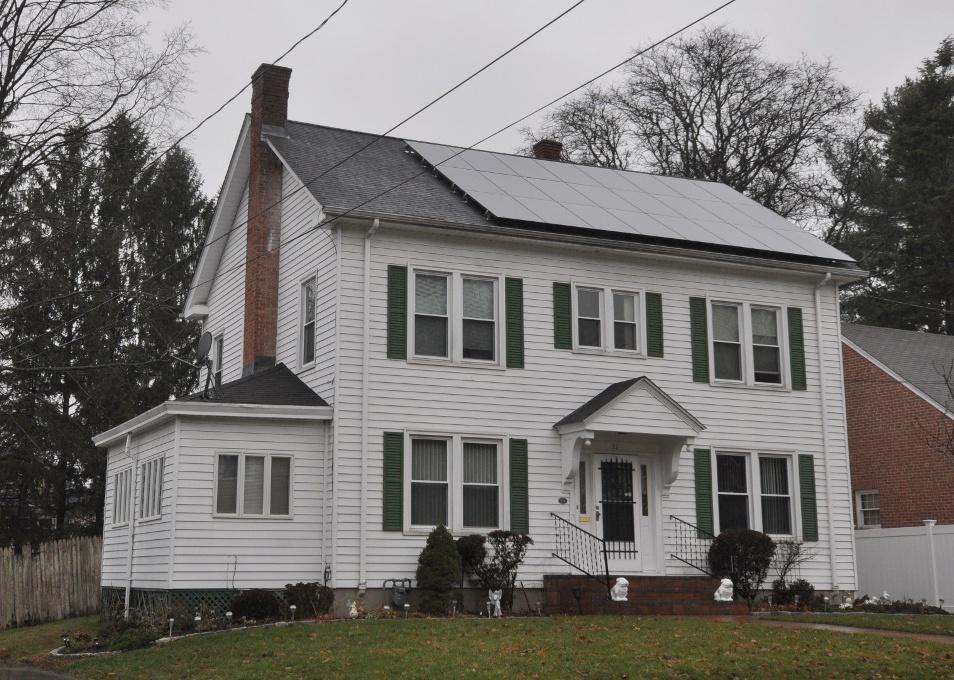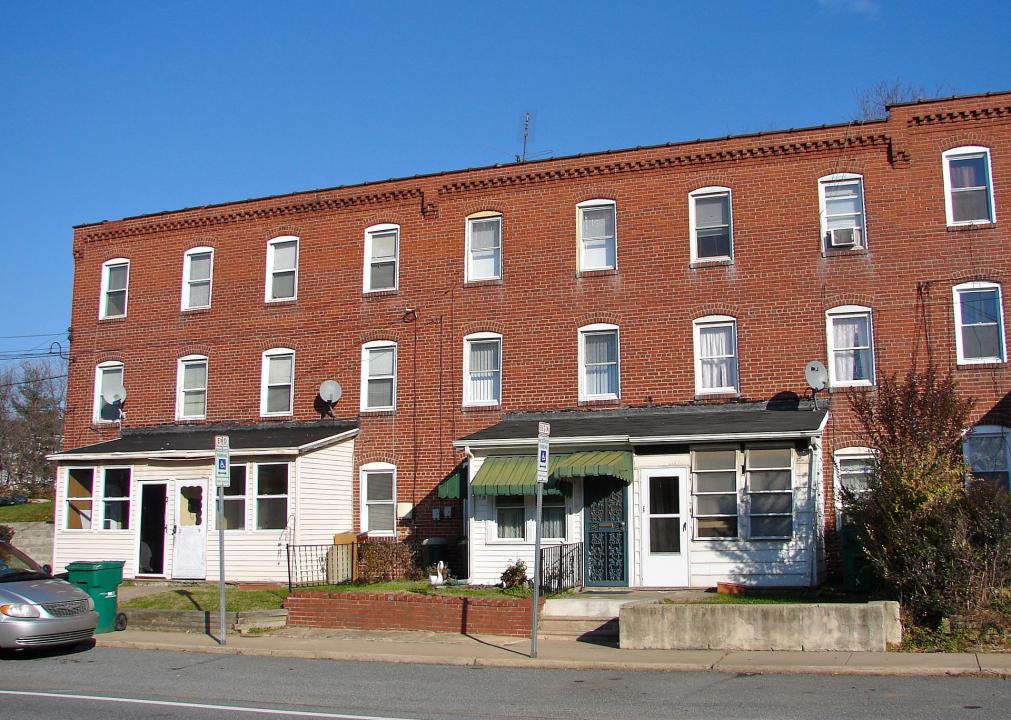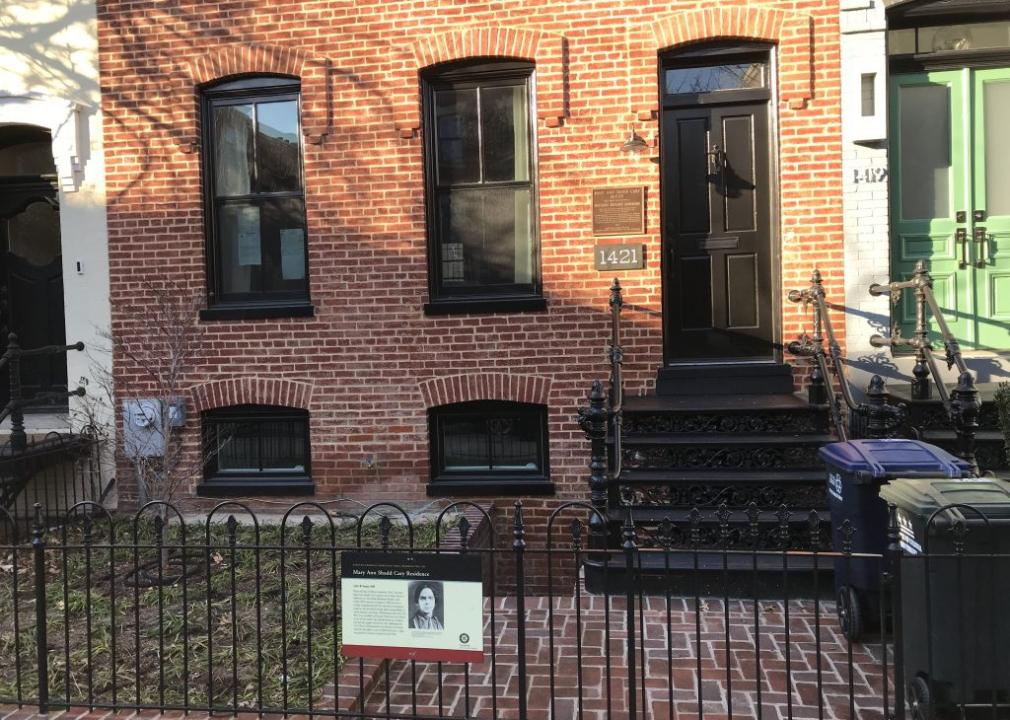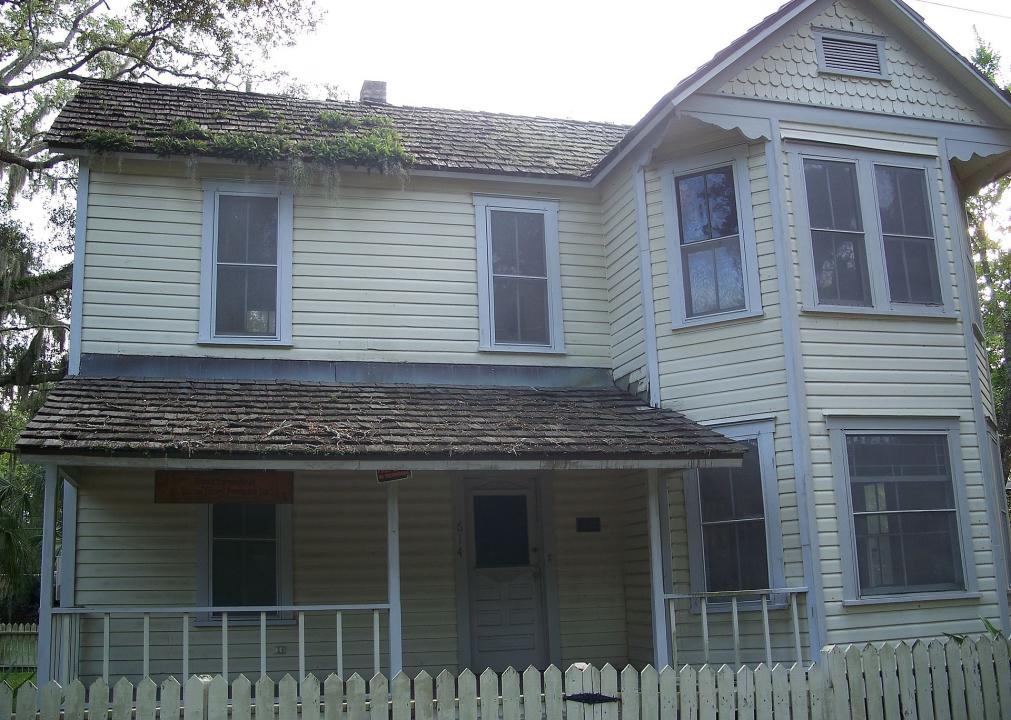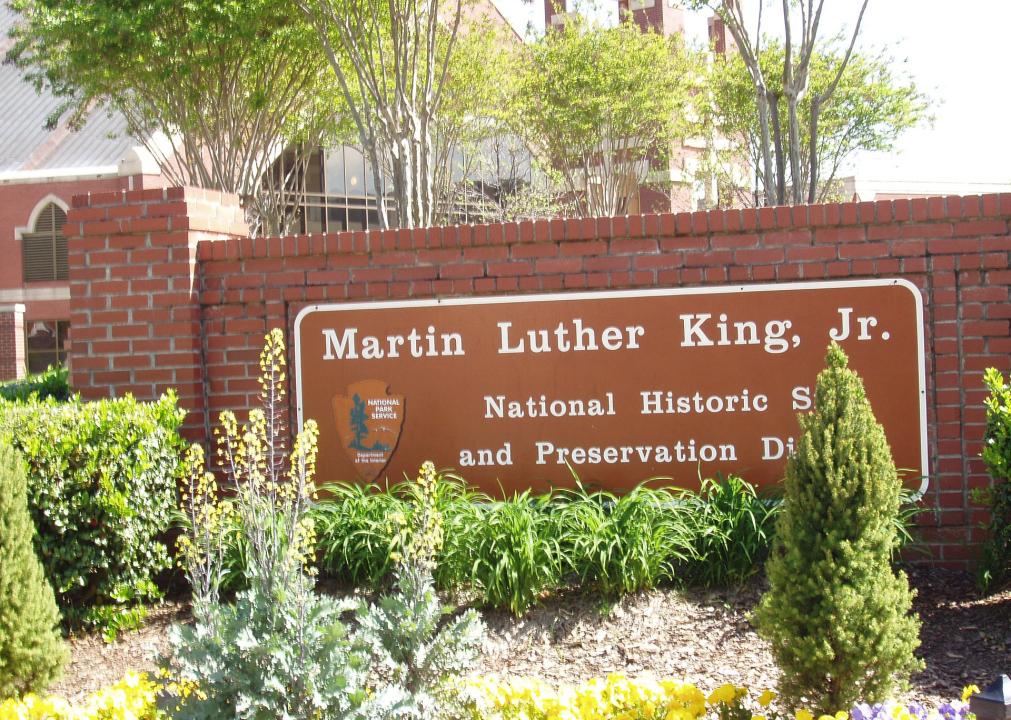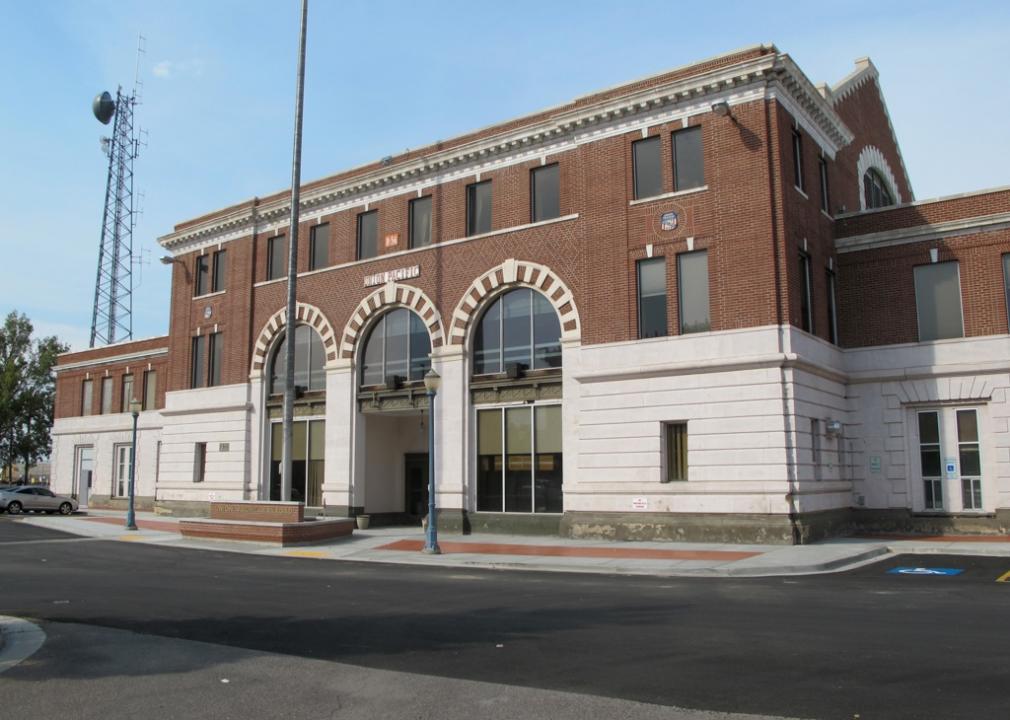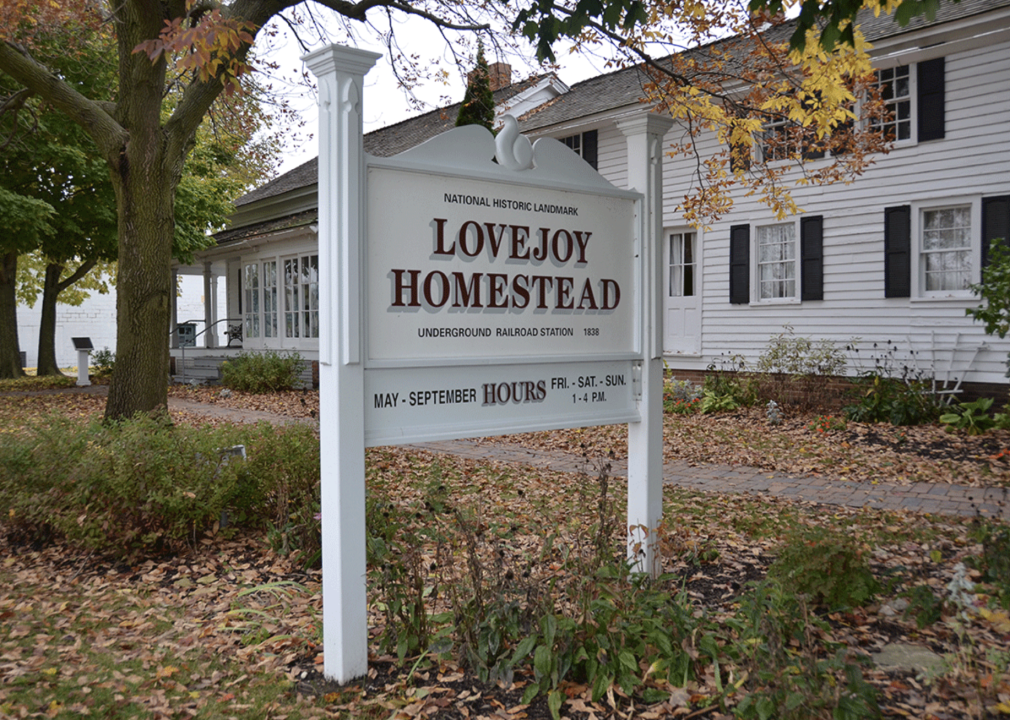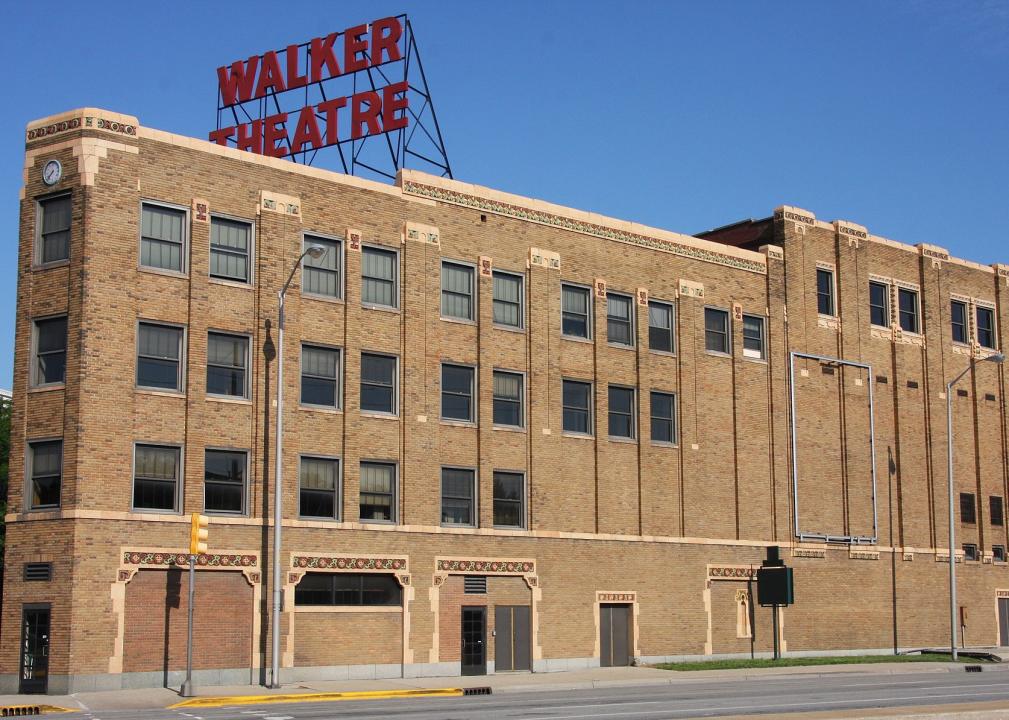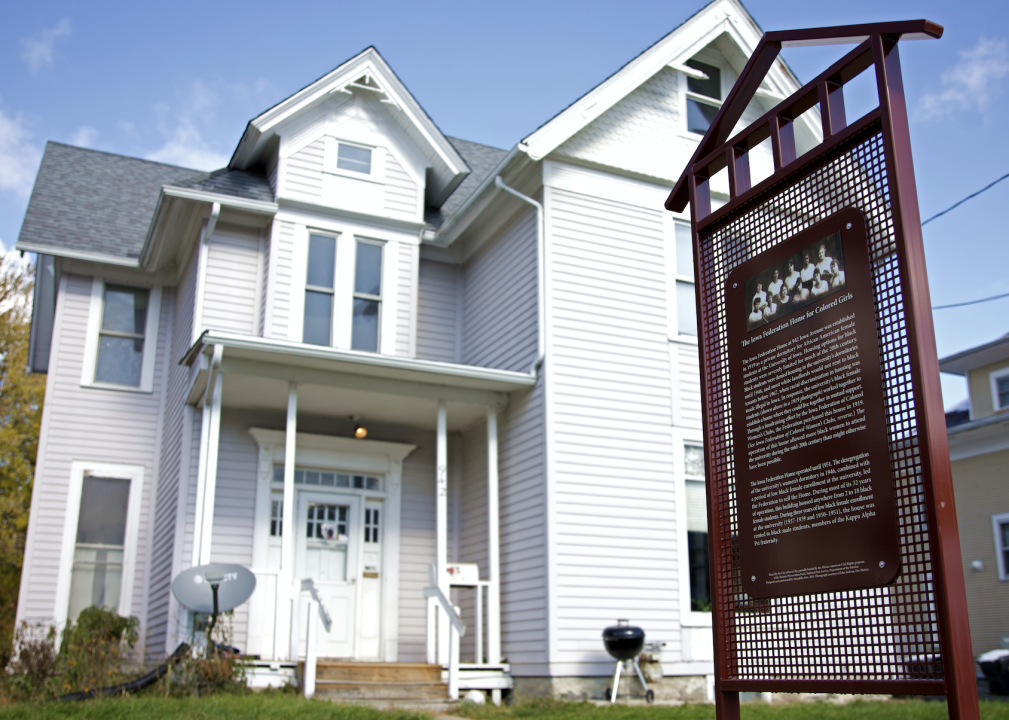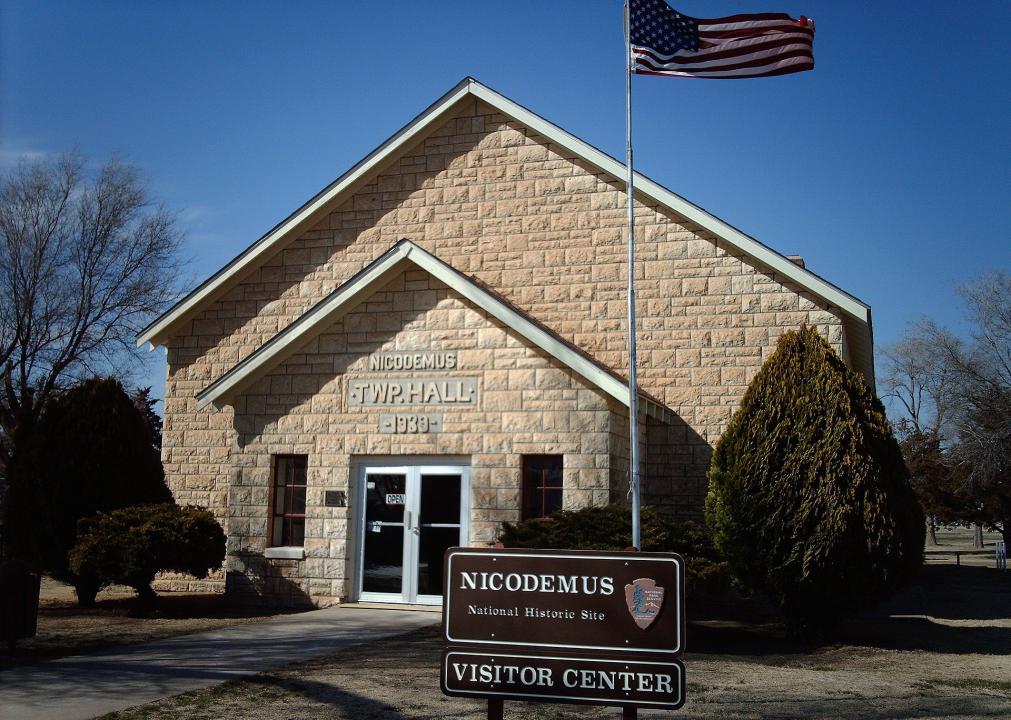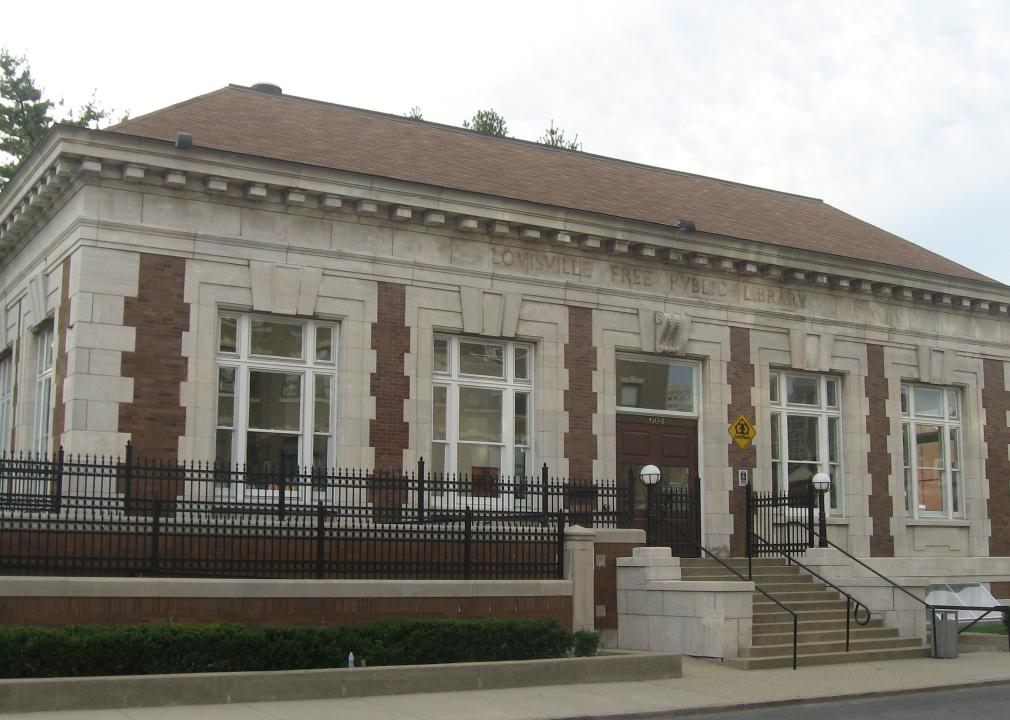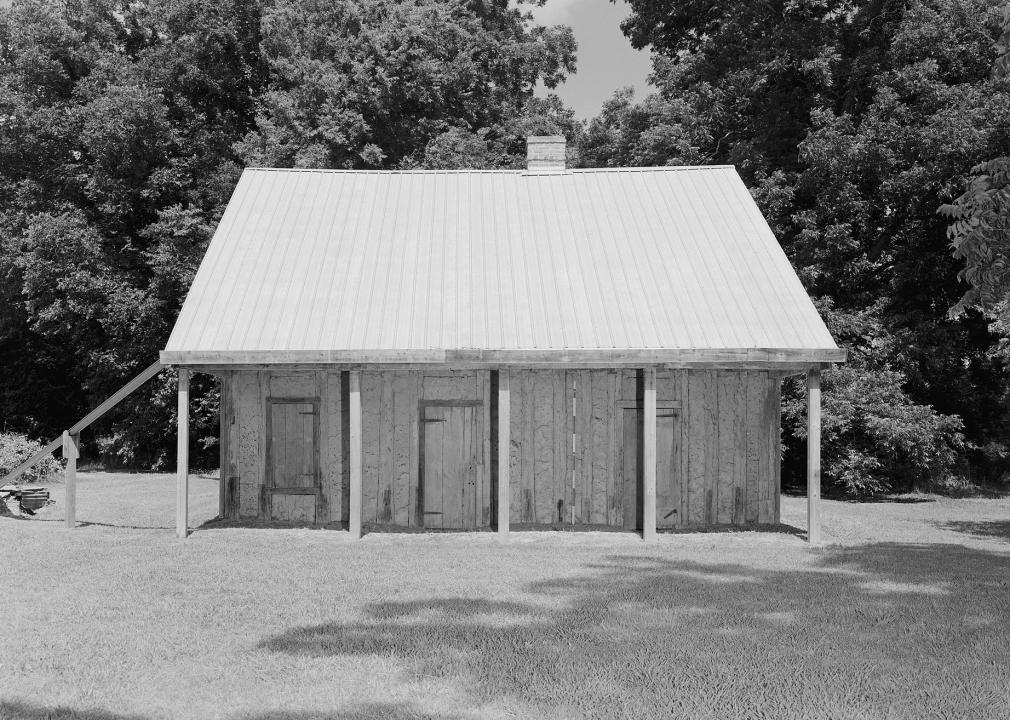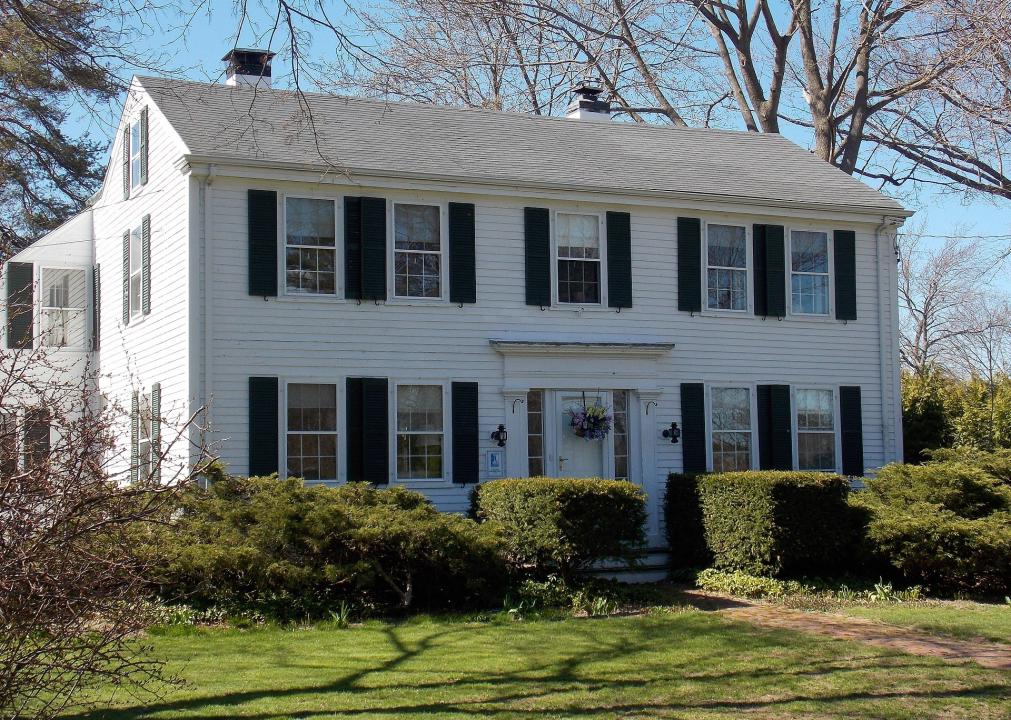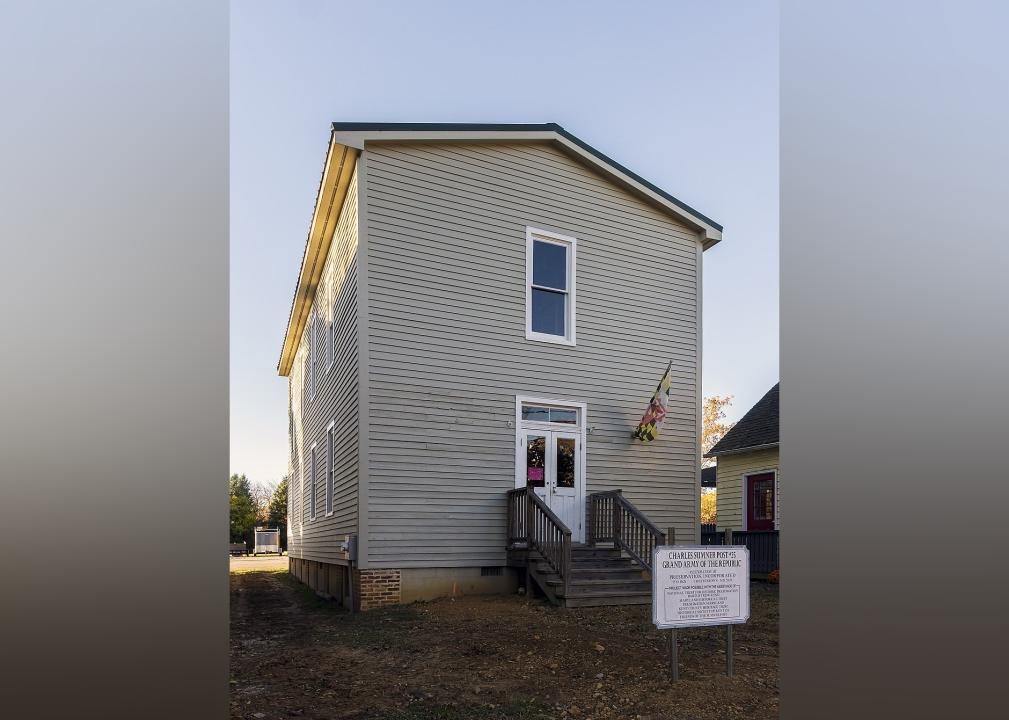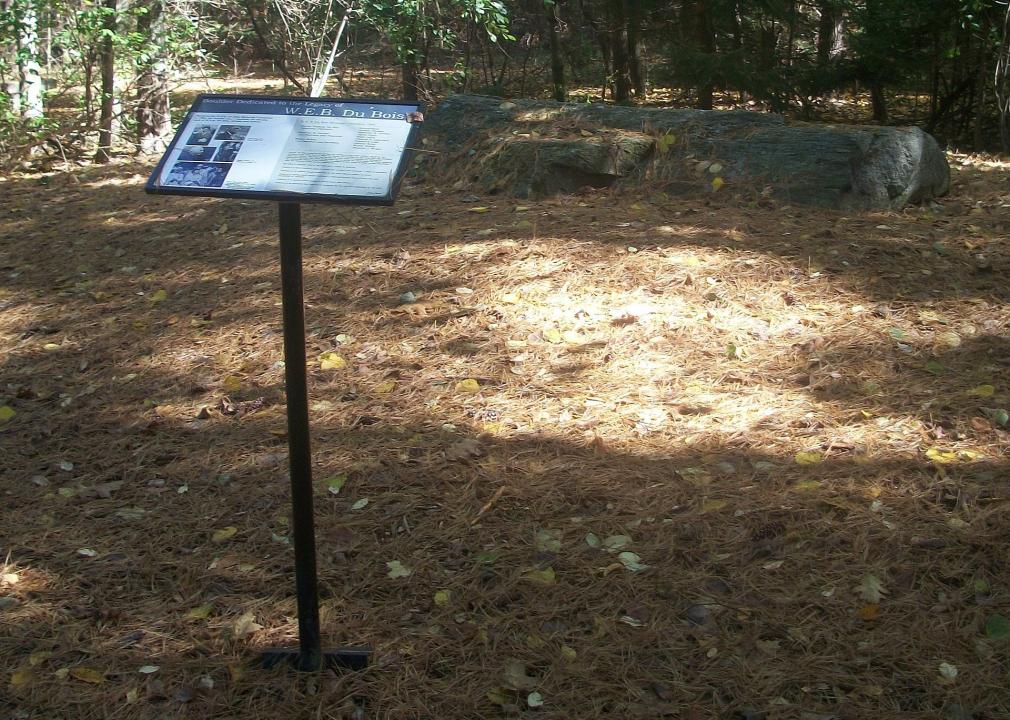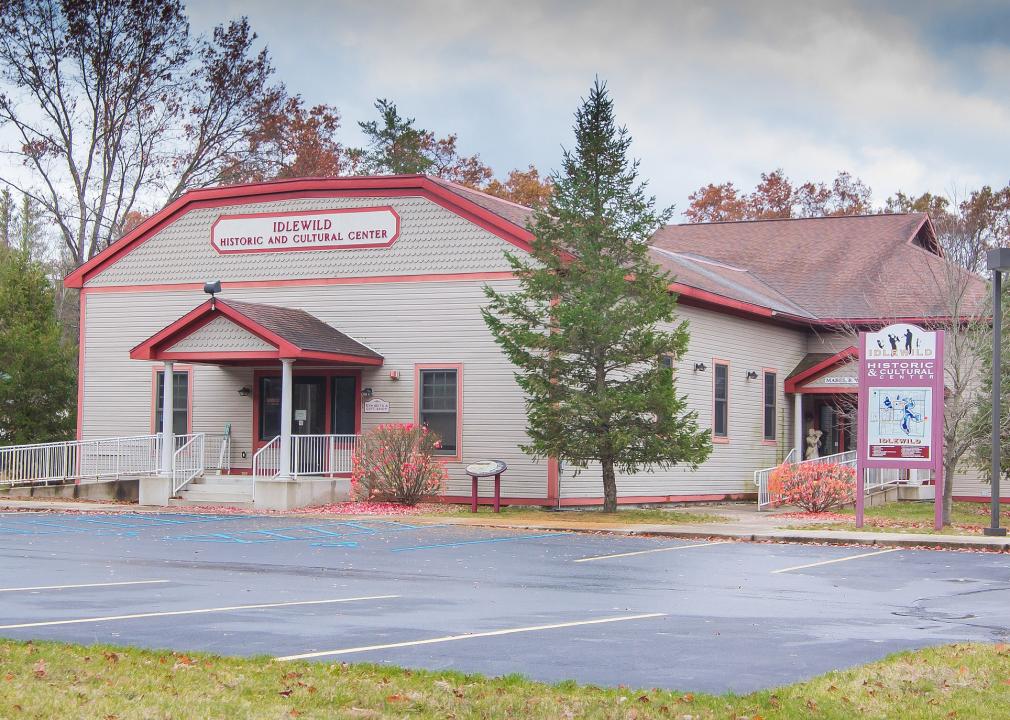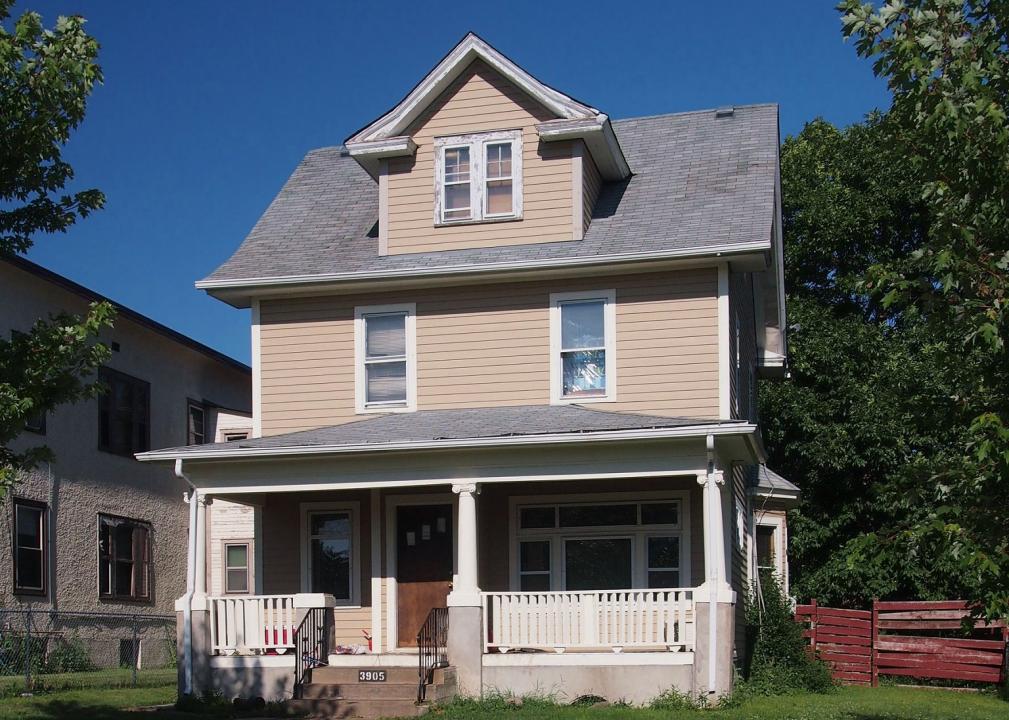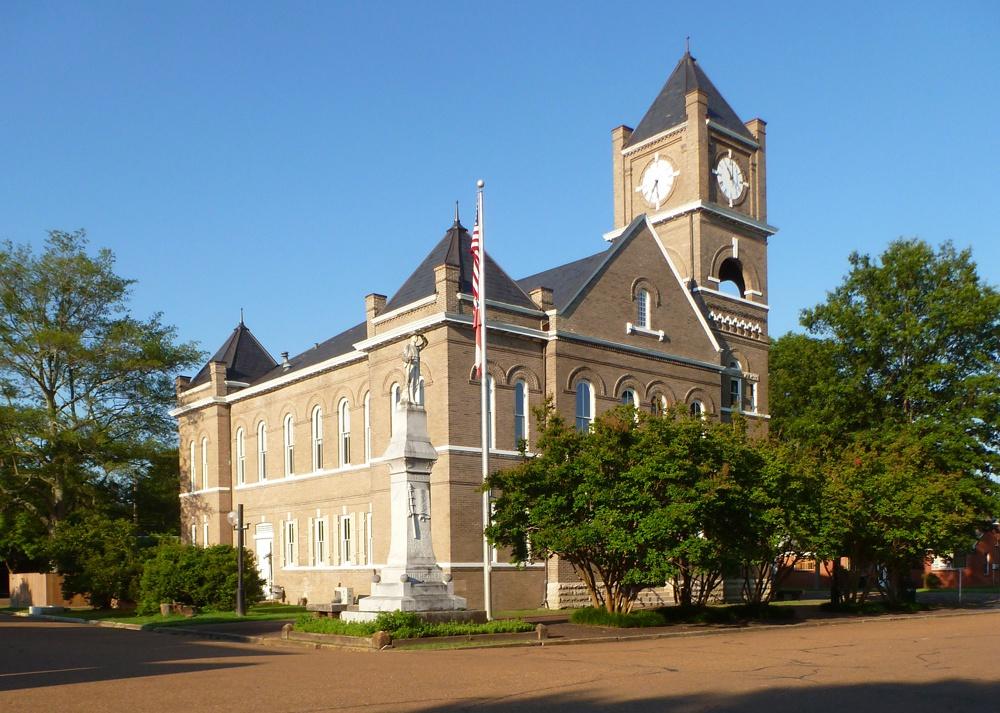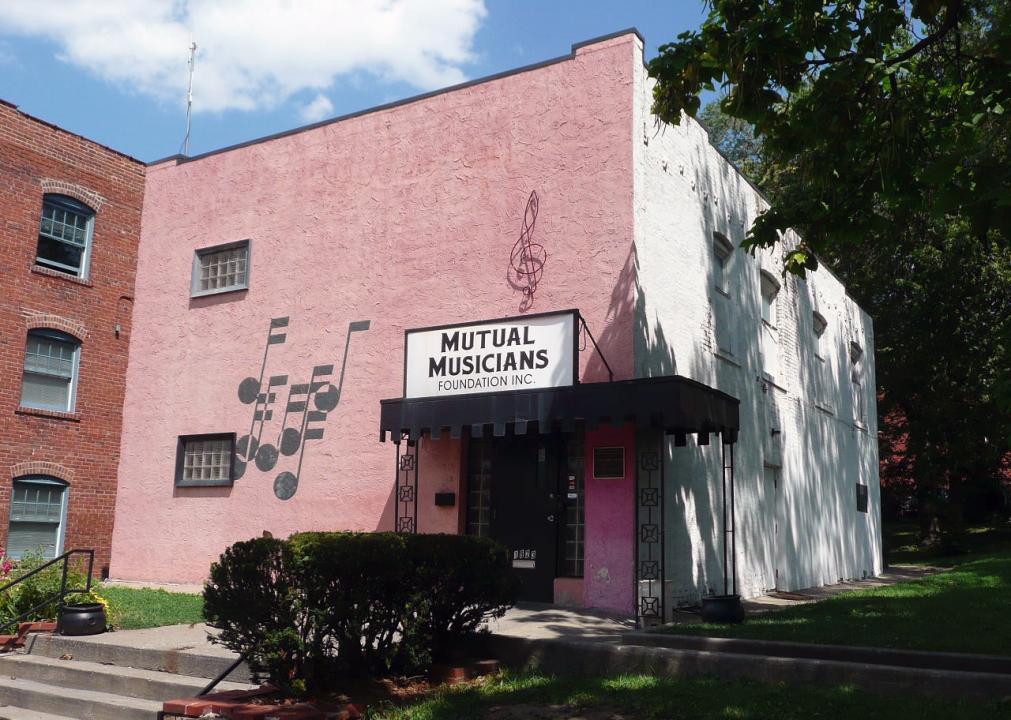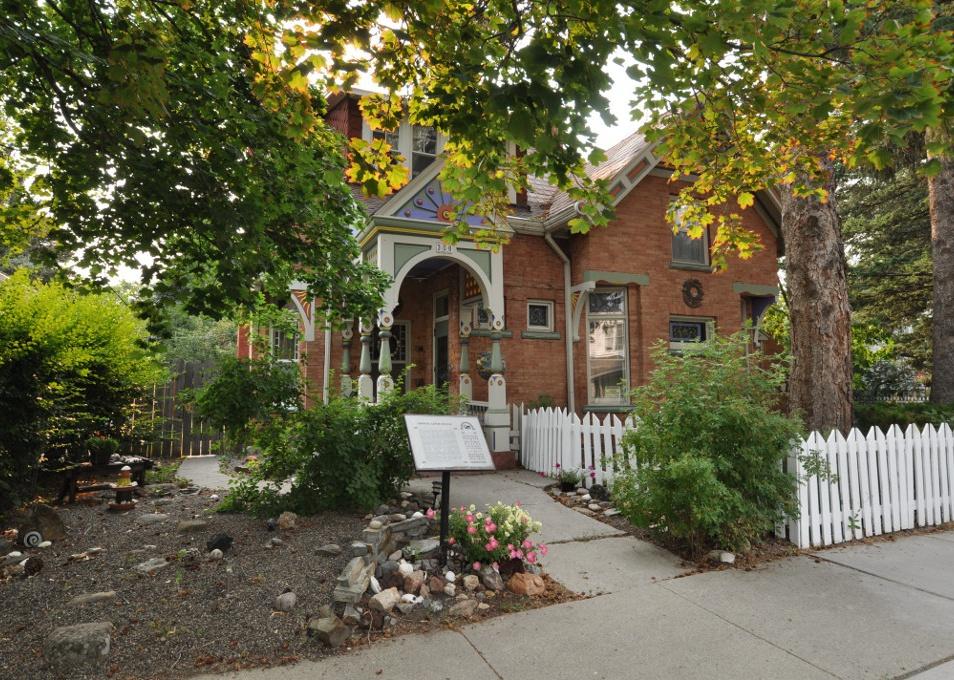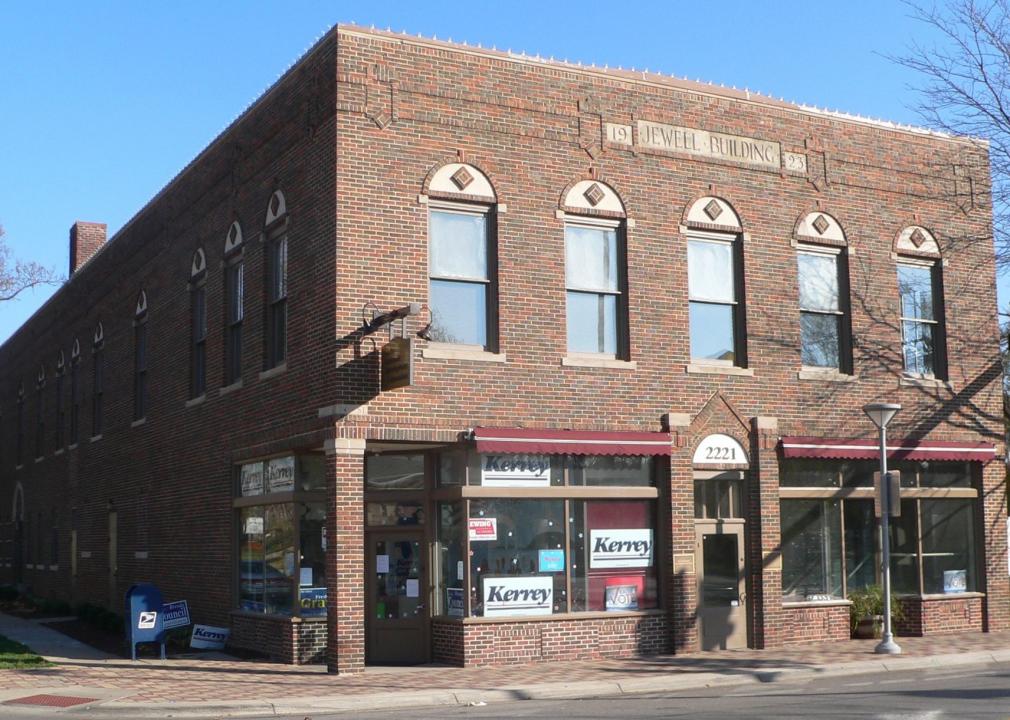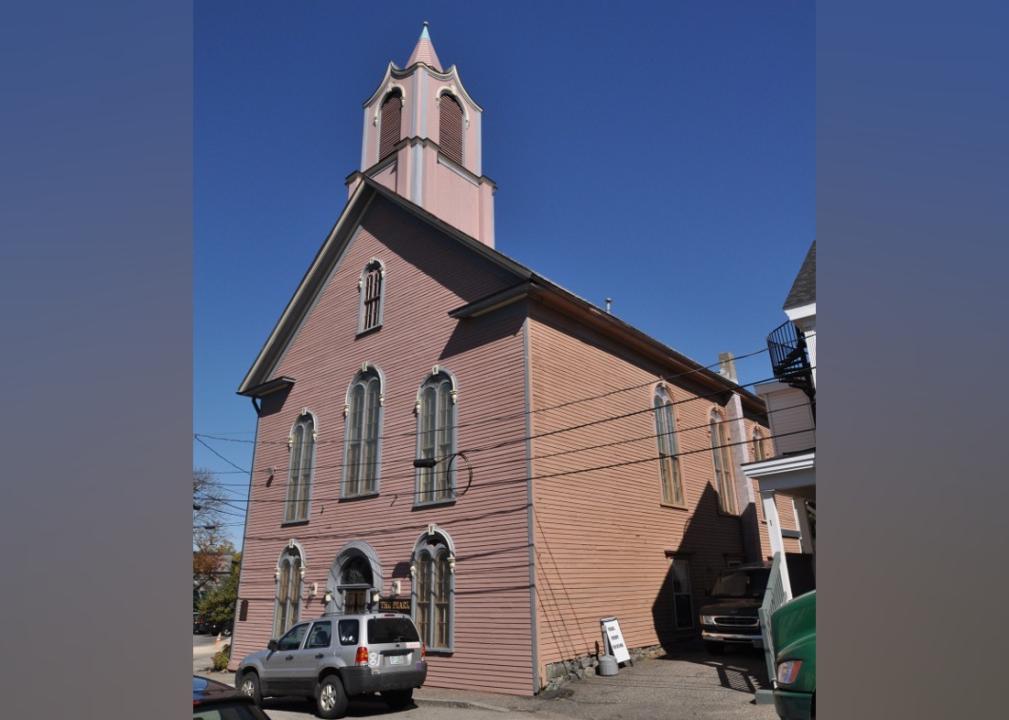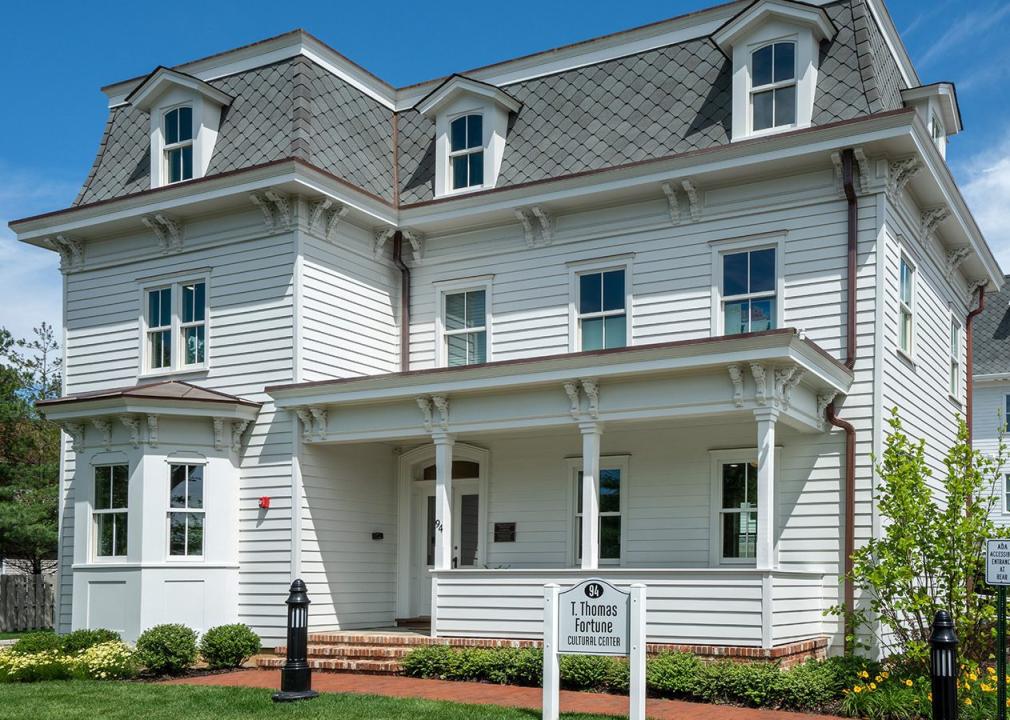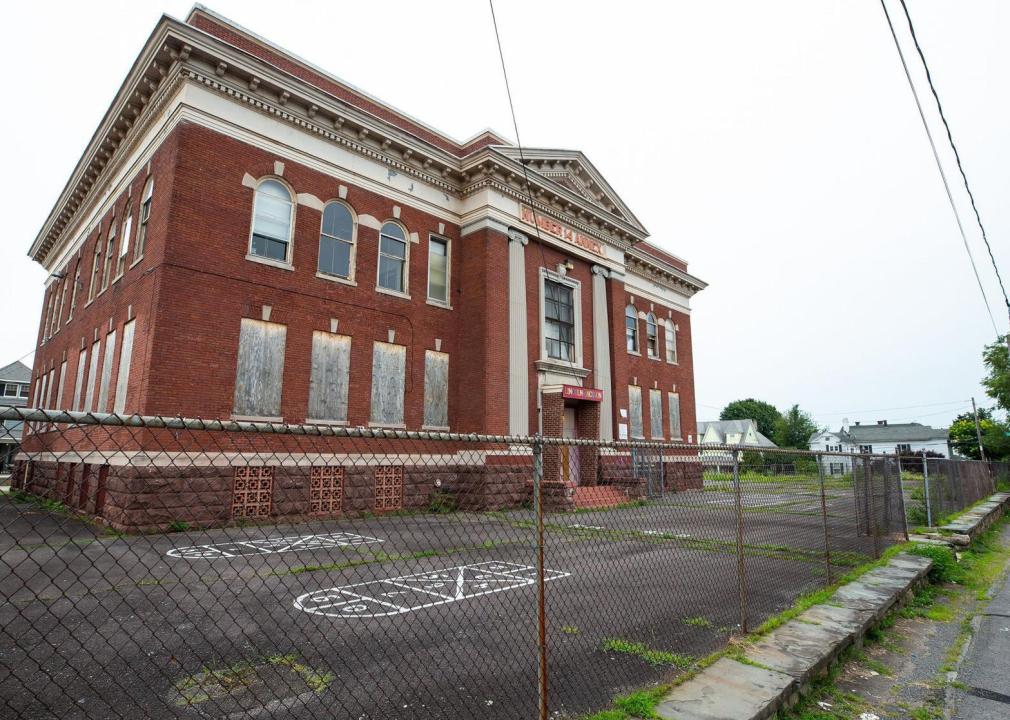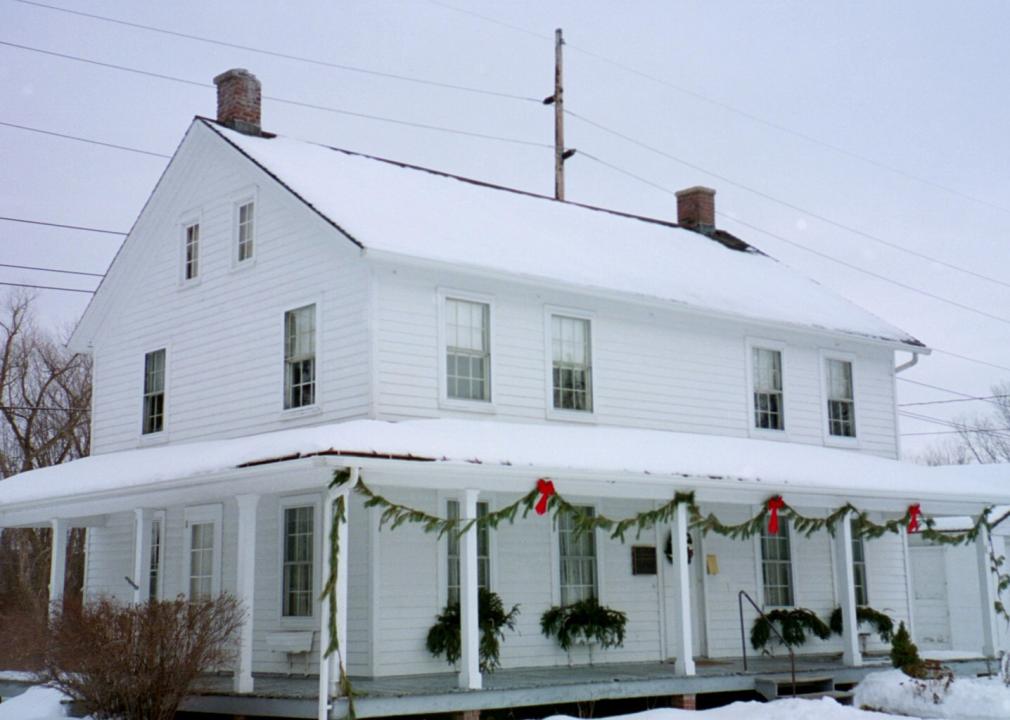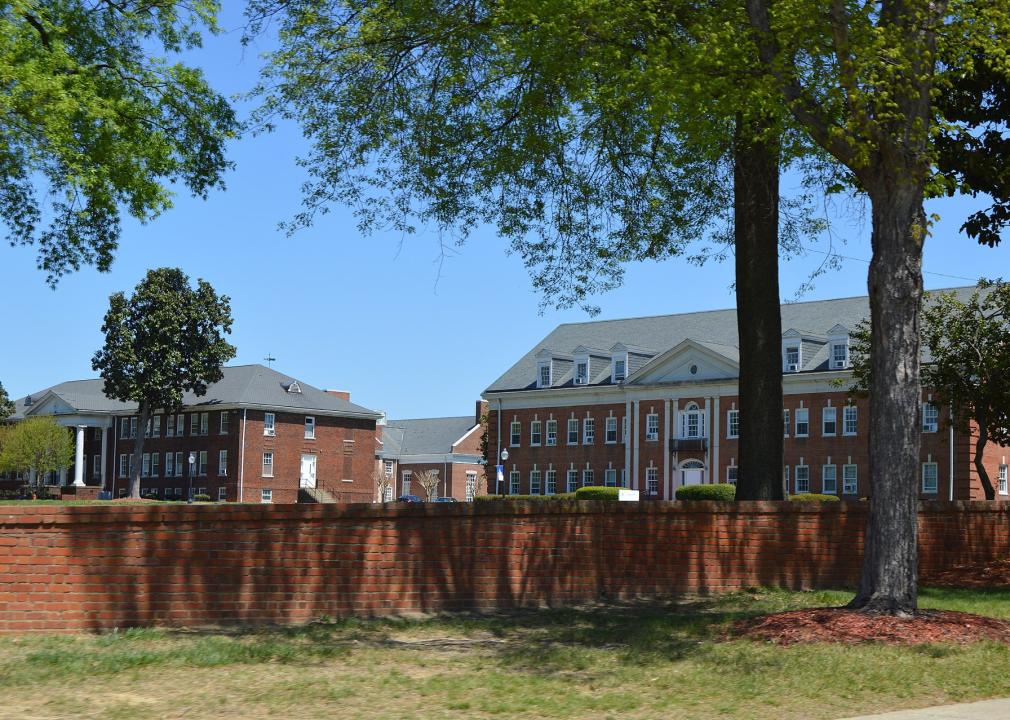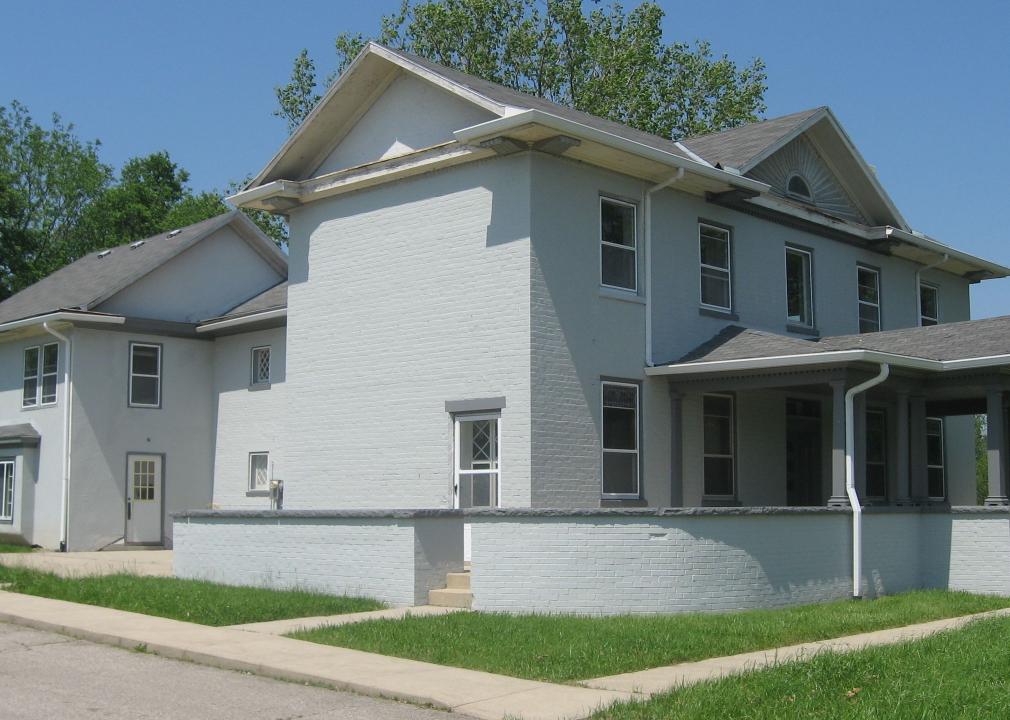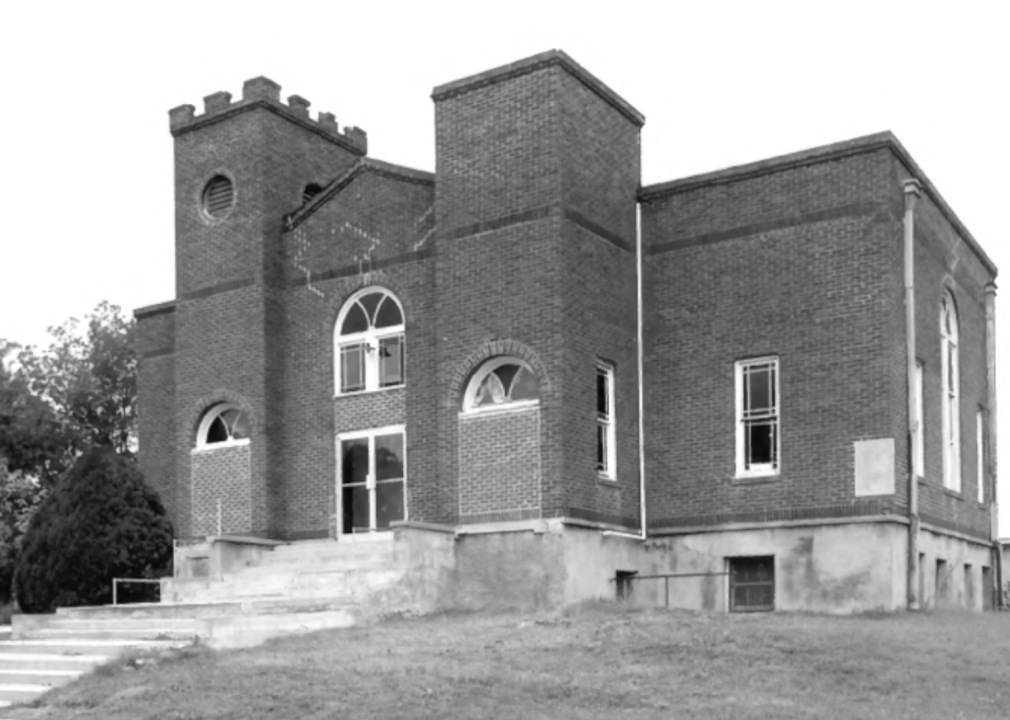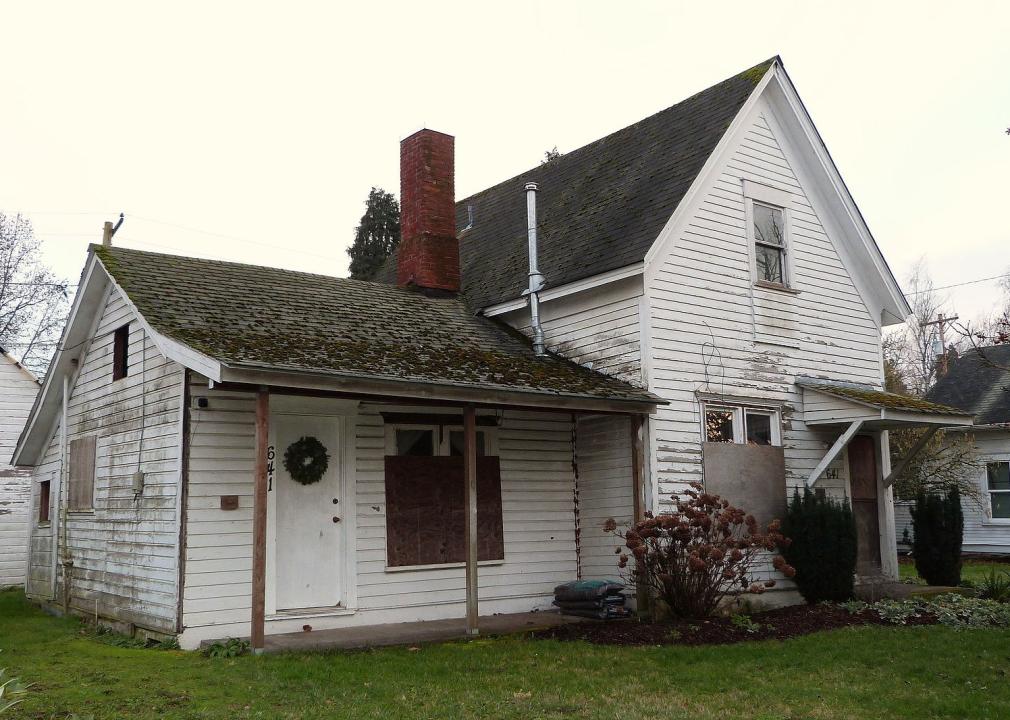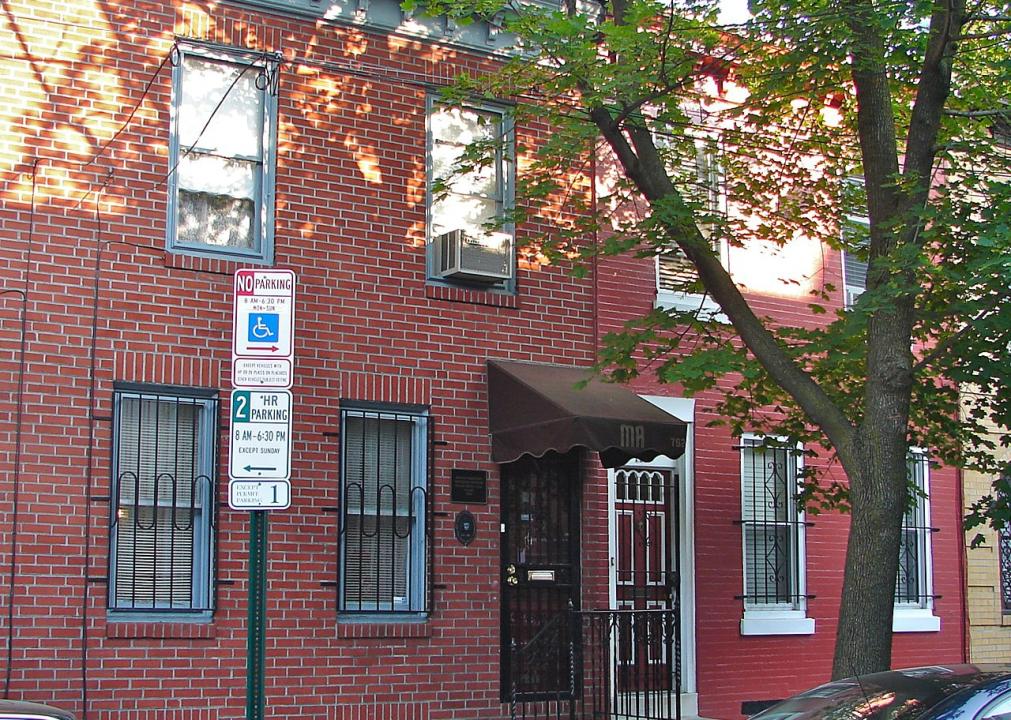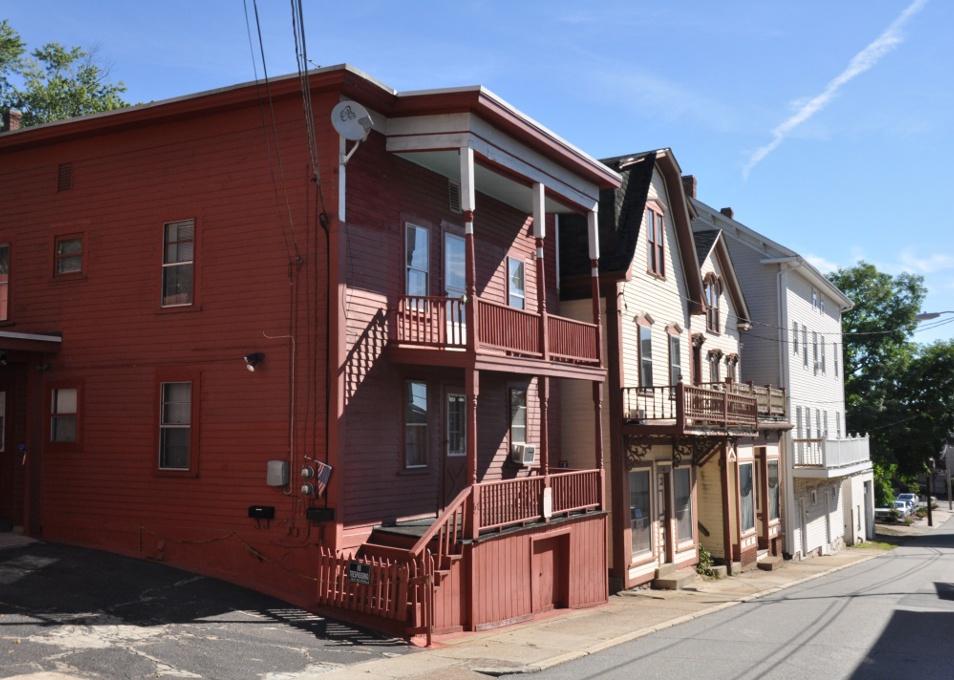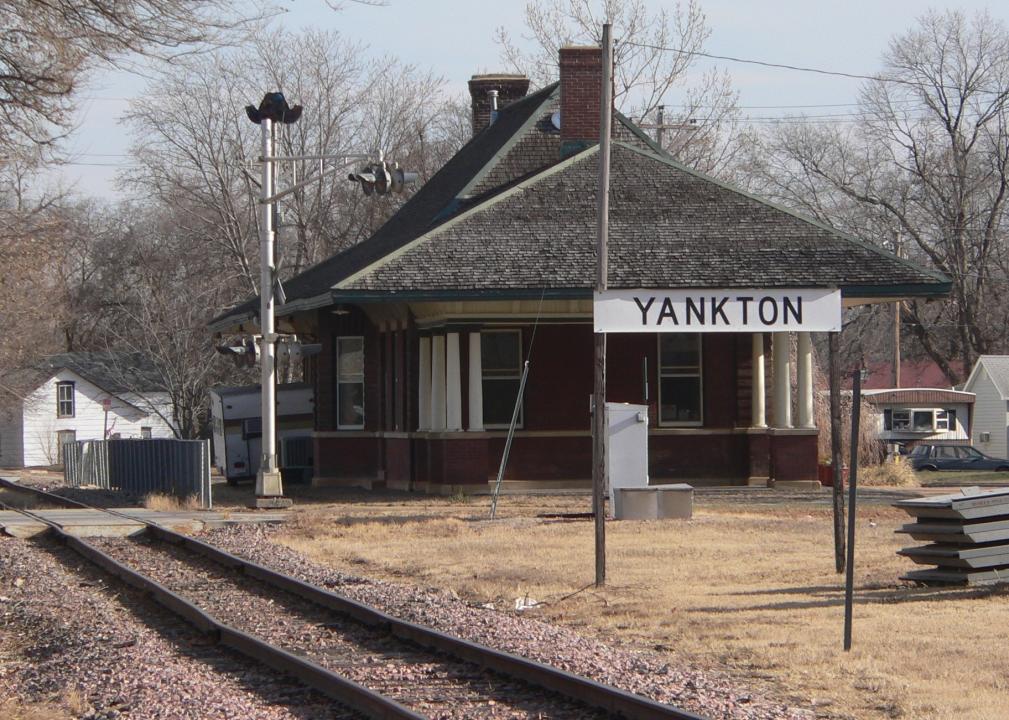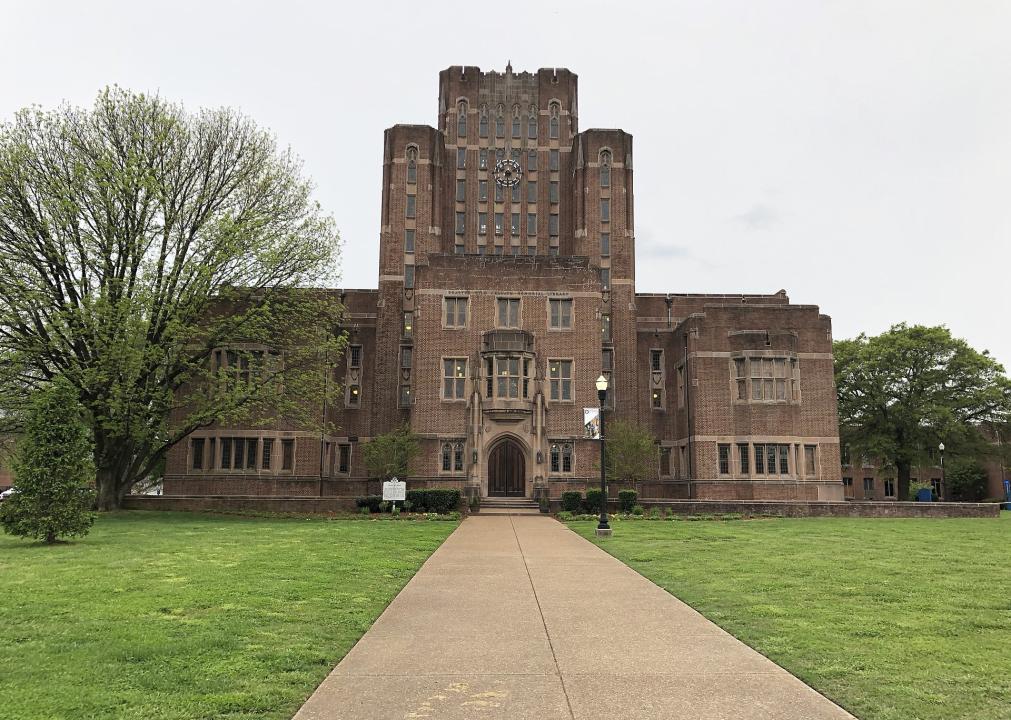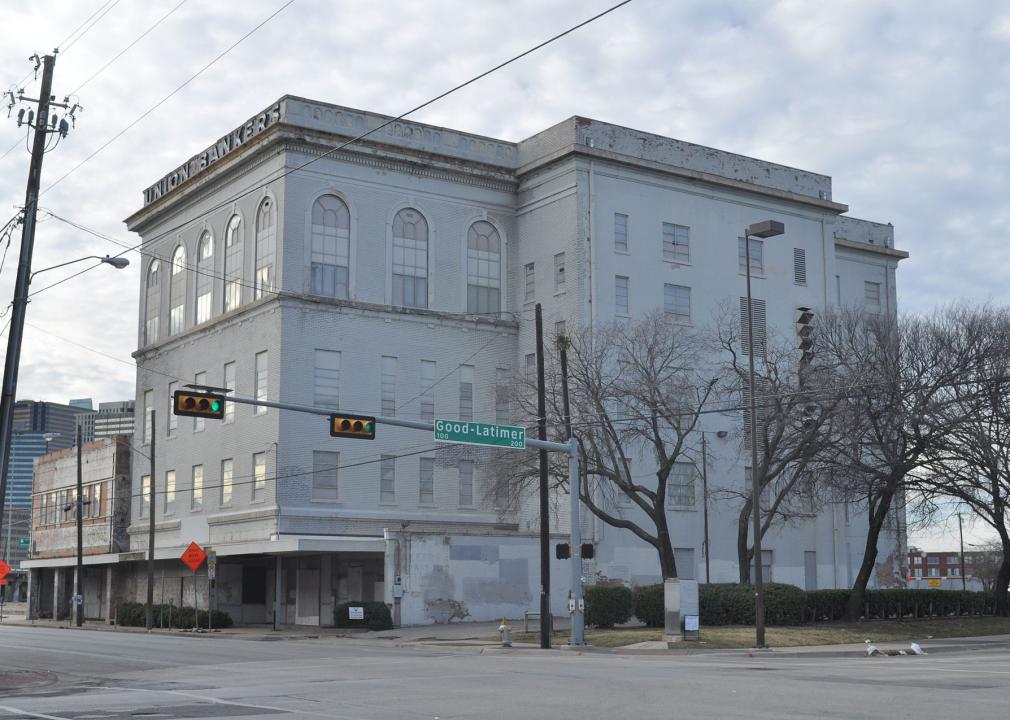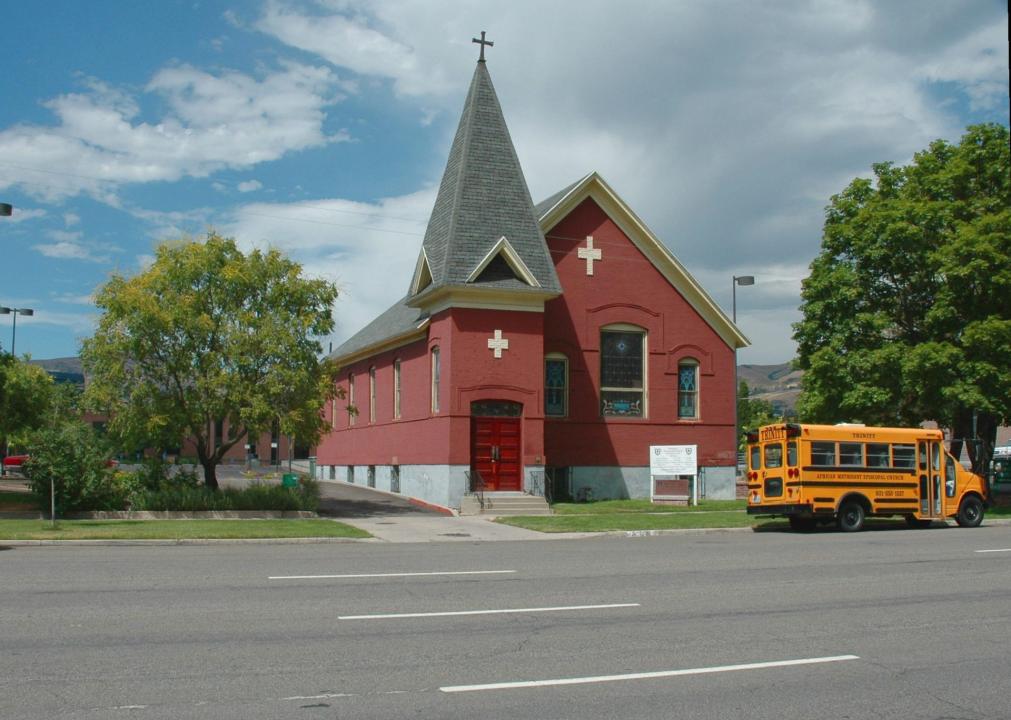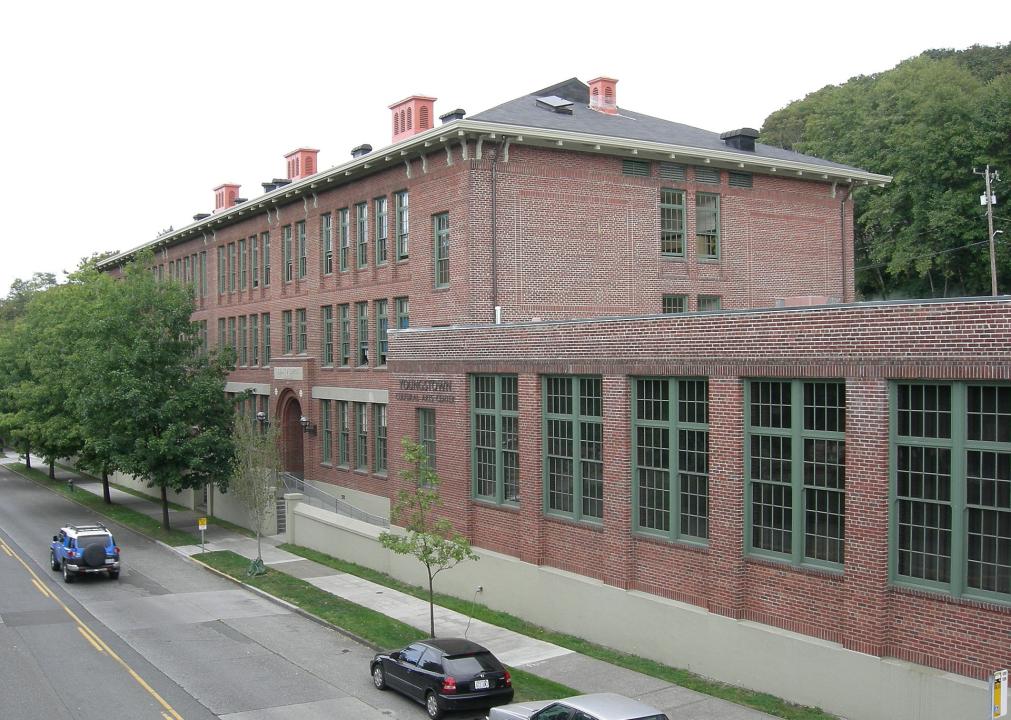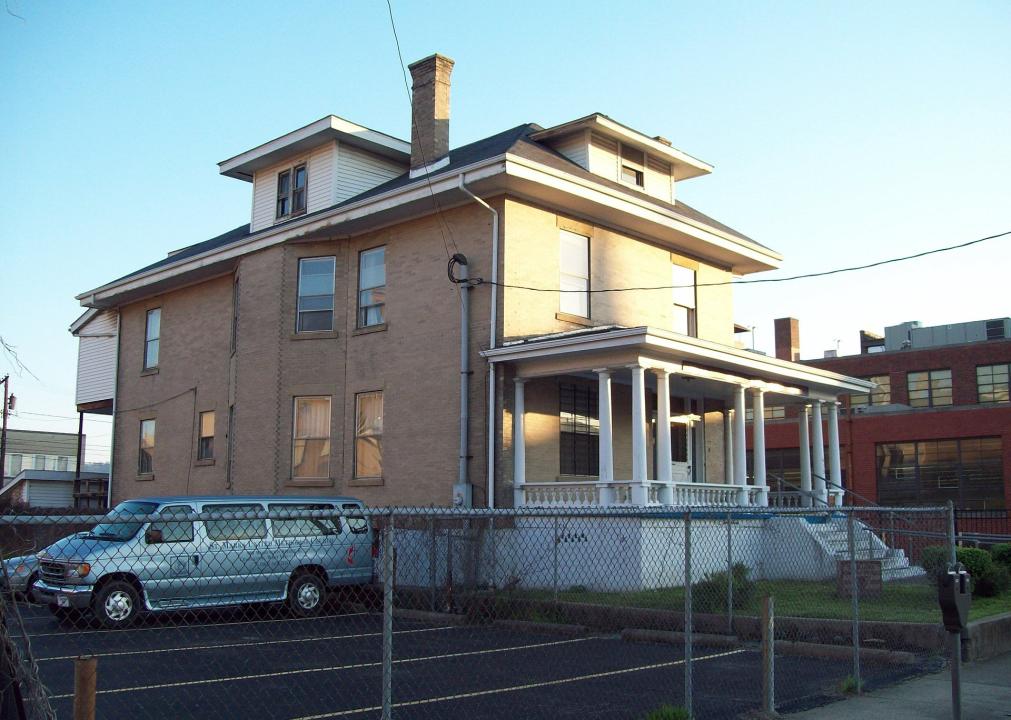Historic sites commemorating Black history in every state

National Register of Historic Places // Wikimedia Commons
Historic sites commemorating Black history in every state
America is still making progress in celebrating the history and triumphs of Black people. In 2021, Tishaura Jones became the first Black woman elected as mayor of St. Louis, just as Kamala Harris was declared the first female vice president of the United States—and the first of Black and Asian ancestry to hold this rank. That same year, Juneteenth (June 17), which signifies the end of slavery in the United States, was made a federal holiday through legislation signed by President Joe Biden.
The legacies of influential Black Americans have not always been acknowledged, so it’s not uncommon that modern-day residents may overlook the historic sites of their own cities. While some historical Black figures are more renowned than others, there are entire generations of historical Black figures—dating back to the days of slavery to Jim Crow to the civil rights era—who have left traces of their vision across the country. Whether it’s prominent figures such as Robert Abbott—who founded The Chicago Defender, one of the largest African American newspapers in the country—or more under-the-radar originators such as Obrey Wendell Hamlet—who, through his entrepreneurial touch, cultivated unique vacation experiences in the Rocky Mountains—one thing’s for certain: there is still a lot more uncharted Black history than we know.
There are 232 sites considered nationally significant for Black history in the U.S. Using the National Register of Historic Places, Stacker identified historic sites commemorating Black history across 47 states. North Dakota, Vermont, Hawaii, and Wyoming did not have Black historic sites listed on the registry. While some states, especially in the South, are home to many sites central to the civil rights movement, Stacker listed the total sites in every state and the names of three historic sites where available. You can visit the full registry of historic places and explore the Civil Rights Trail to learn about additional historic sites across the U.S.
Read on to explore and learn about the historic sites celebrating Black history nationwide.
You may also like: 50 Black writers whose impact went beyond the page
![]()
Nyttend // Wikimedia Commons
Alabama
– Sites commemorating Black history: 106 (24 with state significance, 19 with national significance)
– Tabernacle Baptist Church (Selma)
– Sixteenth Street Baptist Church (Birmingham)
– Macon County High School (Notasulga)
Tabernacle Baptist Church in Selma was designed in the 1920s by an African American architect named David T. West, who was also a church member. The church was the location for the first mass meeting of the voting rights movement, which consisted of 300 attendees.
Dreamkafka // Wikimedia Commons
Alaska
– Sites commemorating Black history: 1 (0 with state significance, 0 with national significance)
– Greater Friendship Baptist Church (Anchorage)
Founded in 1951, Greater Friendship Baptist Church was the first Black American church established in Alaska. Prior to World War II, Anchorage had a small African American community, but by the 1950s, the Black population in Anchorage rose to as many as 5,000 people.
Tony the Marine // Wikimedia Commons
Arizona
– Sites commemorating Black history: 4 (0 with state significance, 0 with national significance)
– Alston, Dr. Lucius Charles House (Mesa)
– Phoenix Union Colored High School (Phoenix)
– Swindall Tourist Inn (Phoenix)
Dr. Lucius Charles Alston was the first African American physician to practice in Mesa. He treated patients of all ethnicities and did not discriminate. Dr. Alston initially treated patients from his home, which remained a prominent fixture until his death in 1958.
Brandonrush // Wikimedia Commons
Arkansas
– Sites commemorating Black history: 67 (15 with state significance, 4 with national significance)
– Centennial Baptist Church (Helena)
– Green House (Little Rock)
– Lake Nixon (Little Rock)
Dr. Elias Camp Morris, born into slavery in 1855, would eventually become a leading figure in Arkansas’ Black community. Morris was the pastor of Centennial Baptist Church in the city of Helena, which served as the headquarters of the National Baptist Convention where Morris was president. He also played a crucial role in the Arkansas Republican Party.
Sanfranman59 // Wikimedia Commons
California
– Sites commemorating Black history: 24 (3 with state significance, 2 with national significance)
– Liberty Hall (Oakland)
– Women’s Building, The (San Francisco)
– Somerville Hotel (Los Angeles)
Built in 1877, Liberty Hall in Oakland was purchased by Marcus Garvey in the 1920s. Liberty Hall was where he used the building as a meeting headquarters for his fraternal organization. Since then, the building has served the West Oakland community for over 100 years.
You may also like: What 50 top tourist destinations looked like 50 years ago
Hustvedt // Wikimedia Commons
Colorado
– Sites commemorating Black history: 13 (3 with state significance, 1 with national significance)
– Winks Panorama (Pinecliffe)
– Fort Lyon (Las Animas)
– Ford, Barney L., Building (Denver)
In the early 1920s, entrepreneur Obrey Wendell “Winks” Hamlet decided to open a lodge where the Black middle class could enjoy leisure time and experience the outdoors with their loved ones. Wink’s Lodge, also referred to as Wink’s Panorama, soon became a go-to destination for Black travelers and the Black elite such as Lena Horne, Zora Neale Hurston, and Duke Ellington. The lodge held significance as being a rare mountain destination experience during a time of unrest. Hamlet managed the lodge until his death in 1965, and Wink’s Panorama closed soon after.
Magicpiano // Wikimedia Commons
Connecticut
– Sites commemorating Black history: 18 (11 with state significance, 2 with national significance)
– First Church of Christ (Farmington)
– Prudence Crandall House (Canterbury)
– Boce W. Barlow Jr. House (Hartford)
Created in 1926, Boce W. Barlow Jr. House was home to Boce W. Barlow Jr., who had a knack for making history. Barlow was not only the first African American judge in Connecticut in 1957, but he also became the state’s first Black senator in 1966. Barlow purchased the home in 1958 and moved in with his wife, Catherine Barlow. They were the first Black family to move onto Canterbury Street.
Smallbones // Wikimedia Commons
Delaware
– Sites commemorating Black history: 18 (8 with state significance, 0 with national significance)
– Raymond Neck Historic District (Leipsic)
– Hickman Row (Claymont)
– Public School No. 111-C (Christiana)
Hickman Row buildings were completed in 1919 and were built to provide segregated housing for the company’s Black American workforce. Many of the town’s inhabitants were from the mass exodus of African Americans who left the South to escape social injustice and pursue better economic opportunities.
AgnosticPreachersKid // Wikimedia Commons
District of Columbia
– Sites commemorating Black history: 54 (28 with state significance, 9 with national significance)
– Metropolitan African Methodist Episcopal Church (Washington D.C.)
– Blanche K. Bruce House (Washington D.C.)
– Mary Ann Shadd Cary House (Washington D.C.)
Mary Ann Shadd Cary, a writer, teacher, activist, and lawyer, became a pioneering figure, as she was the first Black woman newspaper editor in North America when she published Canada’s The Provincial Freeman. Cary was also the first Black woman to receive a law degree from Howard University’s law school in 1883 and the second Black woman to obtain a law degree in the country. The Mary Ann Shad Cary House, located in Washington D.C., honors her historical achievements and dedication to pushing for equality.
Ebyabe // Wikimedia Commons
Florida
– Sites commemorating Black history: 93 (13 with state significance, 8 with national significance)
– Naval Live Oaks Reservation (Gulf Breeze)
– Howard Thurman House (Daytona Beach)
– Norman Film Manufacturing Company (Jacksonville)
Howard Thurman was an author, theologian, educator, and civil rights activist who was also known to be an inspiration to Rev. Dr. Martin Luther King Jr. Thurman, who graduated as valedictorian from Morehouse College in 1923, made significant career strides, becoming the first Black dean at Boston University and traveling abroad to lead Christian missions with Mahatma Gandhi. Thurman (with a couple of exceptions) resided in his three-bedroom home from birth until he left for college. Today, visitors can experience the Howard Thurman House through tours, meetings, small events, and workshops.
You may also like: U.S. airports with the most delays
Public Domain // Wikimedia Commons
Georgia
– Sites commemorating Black history: 157 (57 with state significance, 13 with national significance)
– Mount Zion Baptist Church (Albany)
– Collier Heights Historic District (Atlanta)
– King, Martin Luther, Jr., National Historic Site and Preservation District (Atlanta)
The historic district of Collier Heights was founded in 1948 by African Americans in Atlanta and served as a refuge for middle-class Black Americans during the 1950s and 1960s. The district consisted of mostly brick ranch houses and had been home to civil rights activists such as Martin Luther King Sr. and Ralph David Abernathy.
Society of Architectural Historians
Idaho
– Sites commemorating Black history: 2 (0 with state significance, 0 with national significance)
– St Paul Missionary Baptist Church (Boise)
– East Side Downtown Historic District (Pocatello)
The East Side Downtown Historic District saw developments as a multiethnic neighborhood as early as the 1880s due to railroad work opportunities. Ethnic businesses were doing well but by 1940, these businesses were seen as “undesirable.” After World War II, the Pocatello Housing Authority alongside the Chamber of Commerce decided to rebuild the area for commercial use.
Owen Lovejoy Homestead
Illinois
– Sites commemorating Black history: 18 (1 with state significance, 8 with national significance)
– Lovejoy, Owen, Homestead (Princeton)
– Robert S. Abbott House (Chicago)
– Oscar Stanton De Priest House (Chicago)
Built in 1838 in Princeton, Illinois, the Owen Lovejoy Homestead was the home of the congressman, attorney, and abolitionist Owen Lovejoy. The home was a former station of the Underground Railroad and consists of a secret compartment that hid enslaved people who escaped.
Jonathunder // Wikimedia Commons
Indiana
– Sites commemorating Black history: 37 (7 with state significance, 1 with national significance)
– Walker, Madame C. J., Building (Indianapolis)
– Alexander Taylor Rankin House (Fort Wayne)
– Eleutherian College (Lancaster)
A Black woman entrepreneur, activist, and philanthropist, Madam C.J. Walker is recognized widely as the first self-made female millionaire in the U.S. due to the achievements of her cosmetology empire. Walker created specialized hair care products for Black women after experiencing a scalp ailment that resulted in her own hair loss. The Madame C.J. Walker Building, located at 617 Indiana Ave. in Indianapolis, was built in 1927 and to this day, provides guided tours.
City of Iowa City
Iowa
– Sites commemorating Black history: 14 (4 with state significance, 1 with national significance)
– Fort Des Moines Provisional Army Officer Training School (Des Moines)
– Iowa Federation Home for Colored Girls (Iowa City)
– Buxton Historic Townsite (Lovilia)
Although Buxton was a multiethnic community, the then-bustling coal-mining town had a large, growing Black population. Buxton Historic Townsite, founded in 1895, is named after Benjamin Buxton, who was the president of the Consolidation Coal Company. After World War I, train engines converted to using diesel fuel, and as a result, there was a decrease in demand for coal. Severe fires damaged the mines, many of the residents moved, and as a result, this caused the rapid demise of the once-thriving community.
You may also like: Most popular amusement parks worldwide
Nationalparks // Wikimedia Commons
Kansas
– Sites commemorating Black history: 22 (3 with state significance, 2 with national significance)
– Nicodemus Historic District; Nicodemus National Historic Site (Nicodemus)
– Constitution Hall-Topeka (Topeka)
– Dunlap Colored Cemetery (Dunlap)
Nicodemus, a small town in Kansas, was founded in 1877 by a small group of Black settlers in search of a life free from oppression in a post-Civil War America. Nicodemus served as a place of refuge and saw a large Black migration from the South to the Midwest. Today, the Nicodemus Historic District still exists, with a majority of the population being African American. Guided tours are available for buildings within the town.
Nyttend // Wikimedia Commons
Kentucky
– Sites commemorating Black history: 96 (26 with state significance, 4 with national significance)
– Central Colored School (Louisville)
– Louisville Free Public Library, Western Branch (Louisville)
– Camp Nelson (Nicholasville)
The Central Colored School, built in 1873, was the first public-funded school for African Americans in Louisville. The school was funded by taxpayers as well as Kentucky’s public education system.
Library of Congress // Wikimedia Commons
Louisiana
– Sites commemorating Black history: 79 (14 with state significance, 8 with national significance)
– Kenner and Kugler Cemeteries Archeological District (Norco)
– Port Hudson (Port Hudson)
– Badin-Roque House (Natchez)
The Kenner and Kugler Cemeteries Archeological District, named after the Kenner and Kugler families, houses the remains of close to 300 Black Americans from the 1800s. The cemeteries served as a burial for enslaved people who worked on plantations as well as army veterans and were used regularly until 1928.
Farragutful // Wikimedia Commons
Maine
– Sites commemorating Black history: 4 (2 with state significance, 1 with national significance)
– John B. Russwurm House (Portland)
– Abyssinian Meeting House (Portland)
– Rock Rest (Kittery)
The John B. Russwurm House, built in 1810, was the home of newspaper editor and abolitionist John Brown Russwurm. Russwurm was born in Jamaica to a white plantation owner (who possibly owned property in the area) and a Black Jamaican mother who was believed to be enslaved. Russwurm was frustrated with efforts to end slavery in the U.S. and moved to Liberia, where he became the first Black governor. Russwurm was also instrumental as an owner and co-founder of Freedom’s Journal, the first Black-owned newspaper in the U.S.
Additionally, the Abyssinian Meeting House at 73 Newbury St. in Portland was constructed in 1828 and became the center of spiritual, social, and political life for Portland’s Black community during the era.
Acroterion // Wikimedia Commons
Maryland
– Sites commemorating Black history: 44 (6 with state significance, 2 with national significance)
– Hampton National Historic Site (Towson)
– Sumner, Charles, Post #25, Grand Army of the Republic (Chestertown)
– African Methodist Episcopal Church (Cumberland)
The Sumner, Charles, Post #25, Grand Army of the Republic, built in 1908, was named after Charles Sumner, a senator who was against slavery and a huge advocate for voting rights for African Americans. For decades, the building served as a meeting hall for the Grand Army of the Republic, a veteran’s association, and is one of two African American veteran halls in the U.S. that still exists to this day.
You may also like: Must-do activities at every national park
Daniel Case // Wikimedia Commons
Massachusetts
– Sites commemorating Black history: 33 (6 with state significance, 9 with national significance)
– Du Bois, William E.B., Boyhood Homesite (Great Barrington)
– Cuffe, Paul, Farm (Westport)
– Johnson, Nathan and Mary, Properties (New Bedford)
The W.E.B. Du Bois Boyhood Homesite celebrates the life and legacy of civil rights activist and thought leader, W.E.B. Du Bois, the first African American to obtain a Ph.D. from Harvard University. The property, which had been in Du Bois’ family for over 100 years, was given to him as a gift on his 60th Birthday in 1928.
rossograph // Wikimedia Commons
Michigan
– Sites commemorating Black history: 23 (3 with state significance, 4 with national significance)
– Idlewild Historic District (Boundary Increase) (Yates)
– Dunbar Hospital (Detroit)
– Ossian H. Sweet House (Detroit)
Throughout the first half of the 20th century, the Idlewild Historic District, a Black resort town in Yates Township, was once a booming town drawing in crowds. The unincorporated community, nicknamed “the Black Eden,” was created by white investors during a time when Black people weren’t allowed in predominantly white vacation spaces. By the 1960s, Idlewild saw a decline but in recent years there have been revitalization efforts such as including the Idlewild Historic & Cultural Center in 2003.
McGhiever // Wikimedia Commons
Minnesota
– Sites commemorating Black history: 8 (1 with state significance, 0 with national significance)
– Arthur and Edith Lee House (Minneapolis)
– Lena O. Smith House (Minneapolis)
– Avalon Hotel (Rochester)
In 1931, a Black couple named Arthur and Edith Lee moved into a predominantly white neighborhood with their young daughter at 4600 Columbus Ave. in Minneapolis. Shortly after the Lees moved into their new place, white neighbors surrounded their home, taunted them, and began throwing stones. Racist mobs of close to 3,000 gathered at the home for several weeks, demanding the Lees sell the house and move. The Lees soon worked with Lena Olive Smith, the first Black woman attorney in Minnesota who would represent them in the housing discrimination case. Lena O. Smith House has been noted as a historical site in honor of Lena Smith’s work as a civil rights attorney and activist.
Calvin Beale // Wikimedia Commons
Mississippi
– Sites commemorating Black history: 90 (27 with state significance, 8 with national significance)
– Oakland Chapel (Alcorn)
– Tallahatchie County Second District Courthouse (Sumner)
– I. T. Montgomery House (Mound Bayou)
Built in 1910, the Tallahatchie County Second District Courthouse located in Sumner, Mississippi, was where the historical Emmet Till murder trial took place. Today, visitors can still book a tour at the Emmett Till Interpretive Center.
Mwkruse // Wikimedia Commons
Missouri
– Sites commemorating Black history: 86 (8 with state significance, 6 with national significance)
– John W. Boone House (Columbia)
– Mutual Musicians’ Foundation Building (Kansas City)
– Chuck Berry House (St. Louis)
The Mutual Musicians’ Foundation Building, built in 1904, is a significant cultural asset for Kansas City and the jazz genre of music. In 1917, a group of African American musicians joined together to create the Musicians’ Protective Union, Local No. 627, which would allow them the opportunity to turn their musical passion into full-time careers and secure improved working conditions and contracts. The union was successful and formed the Mutual Musicians Foundation to oversee the building.
You may also like: Top things on America’s travel bucket list
Magicpiano // Wikimedia Commons
Montana
– Sites commemorating Black history: 6 (1 with state significance, 0 with national significance)
– Shaffer’s Chapel African Methodist Episcopal Church (Butte)
– Union Bethel African Methodist Episcopal Church (Great Falls)
– Samuel Lewis House (Bozeman)
Samuel Lewis House was the home of Samuel Lewis, a notable member of the Black community in Bozeman. Lewis was born in Haiti in 1835 and immigrated to the United States with his parents when he was a child. Lewis grew up in upstate New York, then moved to San Francisco, where he became a barber, and eventually settled in the city of Bozeman in 1868, where he opened a barbershop, worked as a miner, and built and rented out homes. In 1896, when Lewis died, his estate was worth $25,000, which at that time was considered a great fortune, making him one of Montana’s wealthiest members of the Black community.
Ammodramus // Wikimedia Commons
Nebraska
– Sites commemorating Black history: 12 (1 with state significance, 2 with national significance)
– Jewell Building (Omaha)
– Malcolm X House Site (Omaha)
– Mayhew Cabin (Nebraska City)
James “Jimmy” Grant Jewell, a Republican leader and businessman who owned a pool hall, was an influential figure in Omaha’s Black community. At the time, there were movie theaters and pool halls along North 24th Street, with a majority of the locales being for white people only. In 1922, Jewell had the vision to build a ballroom in Omaha’s downtown area that would compete with other venues which occasionally hosted Black performers. Jewell hired an Omaha architect and opened the Jewell Building in 1923, which at the time was called Jewell’s Hall.
Bobak Ha’Eri // Wikimedia Commons
Nevada
– Sites commemorating Black history: 6 (1 with state significance, 0 with national significance)
– Moulin Rouge Hotel (Las Vegas)
– Berkley Square (Las Vegas)
– Clark Avenue Railroad Underpass (Las Vegas)
The historic Berkley Square area was designed in 1949 by Paul Revere Williams, a renowned African American architect from Los Angeles and named after Thomas L. Berkley, a Black attorney from Oakland. Berkley Square was designed for Black residents in Las Vegas at a time when segregation was at an all-time high. The district provided affordable housing for its residents and was financed by Berkley, along with other financiers J. J. Byrnes and Edward A. Freeman.
Magicpiano // Wikimedia Commons
New Hampshire
– Sites commemorating Black history: 1 (1 with state significance, 0 with national significance)
– Freewill Baptist Church-Peoples Baptist Church-New Hope Church (Portsmouth)
This historic landmark is noted for being New Hampshire’s first church building owned by a majority-Black congregation. For years, the church was the center of Portsmouth’s spiritual, civic, and social life. Among the church’s most renowned visitors was Rev. Dr. Martin Luther King Jr., who preached there in 1952.
Jack Boucher // Wikimedia Commons
New Jersey
– Sites commemorating Black history: 33 (6 with state significance, 2 with national significance)
– T. Thomas Fortune House (Red Bank)
– Beverwyck Site (Parsippany-Troy Hills)
– Gethsemane Cemetery (Little Ferry)
Timothy Thomas Fortune was born a slave in Florida in 1856 and went on to become a successful journalist and publisher, civil rights leader, and influential economist in the Black community. Fortune and his family moved from Brooklyn to Red Bank, New Jersey, in the early 1900s. There, he built his home, which he nicknamed “Maple Hall.” The T. Thomas Fortune House, which would become a structure of inspiration, is where Fortune and his wife would entertain notable Black leaders of the time such as Booker T. Washington. T. Thomas Fortune House currently holds public tours.
You may also like: Least visited destinations in the world
National Register of Historic Places Registration
New Mexico
– Sites commemorating Black history: 4 (2 with state significance, 1 with national significance)
– Hawikuh (Zuni)
– Lincoln Jackson School (Clovis)
– Dunbar, Paul Laurence, Elementary School (Vado)
The Lincoln Jackson School saw its early stages in 1924 and was the primary public elementary school in Clovis, New Mexico, to provide education solely to African American students. Classes were held in a church chapel until 1930 before relocating. Mrs. Ida O. Jackson was a well-liked school teacher after whom the school was partially named.
Lvklock // Wikimedia Commons
New York
– Sites commemorating Black history: 102 (8 with state significance, 28 with national significance)
– Brown, John, Farm and Gravesite (Lake Placid)
– Stephen and Harriet Myers House (Albany)
– Harriet Tubman Home for the Aged (Auburn)
Despite being born into slavery, Harriet Tubman was a visionary who dreamed of opening a nursing home for the poor and elderly in her community. She did just that and purchased a property in 1896, working alongside the African Methodist Episcopal Zion Church to open the Harriet Tubman Home for the Aged. An abolitionist, Tubman not only became a powerful figure in helping other enslaved people gain freedom but also worked as a nurse and spy during the Civil War before she eventually became a patient at her own residence until her death in 1913.
Nyttend // Wikimedia Commons
North Carolina
– Sites commemorating Black history: 188 (28 with state significance, 7 with national significance)
– Bennett College Historic District (Greensboro)
– Queen Anne’s Revenge (Atlantic Beach)
– Union Tavern (Milton)
Union Tavern was the historic home of Thomas Day, a freed Black cabinet maker and businessman known for his architectural woodwork. Day purchased the tavern on Main Street as his workshop in 1848 and was highly successful at a time when African Americans faced restrictions. One of Day’s most recognized works was the 1847-49 expansion of the libraries and halls at the University of North Carolina.
Nyttend // Wikimedia Commons
Ohio
– Sites commemorating Black history: 36 (6 with state significance, 4 with national significance)
– Tawawa Chimney Corner (Wilberforce)
– Hanford Village George Washington Carver Addition Historic District (Columbus)
– Col. Charles Young House (Wilberforce)
Tawawa Chimney Corner, a farmhouse in Wilberforce, Ohio, was the home of church Bishops Benjamin W. Arnett and Reverdy C. Ransom and served as a conduit for the advancement of civil rights for Black people in the U.S.
Col. Charles Young was the first African American to obtain the distinguished rank of colonel in the U.S. Army. He was also a civil rights leader who overcame racial barriers and emerged as a leading figure in the Black community. The Col. Charles Young House has been deemed a significant landmark as it’s where Young lived during his years as a professor at Wilberforce University.
National Park Service // Wikimedia Commons
Oklahoma
– Sites commemorating Black history: 65 (4 with state significance, 2 with national significance)
– One-hundred-and-one Ranch (Ponca City)
– Boley Historic District (Boley)
– Langston University Cottage Row Historic District (Langston)
The Boley Historic District is a region of an all-Black town founded in Boley, Oklahoma, in 1903 and incorporated in 1905. The town was named after J.B. Boley, a white man who built a railroad in the middle of the town and who believed that Black people could take care of themselves. Boley’s fertile farmland garnered the attention of settlers from other states such as Texas and Georgia, who saw it as an economic opportunity. Today, people can still take a tour to experience the Boley Historic District.
You may also like: 25 extreme getaways
Ian Poellet // Wikimedia Commons
Oregon
– Sites commemorating Black history: 9 (2 with state significance, 0 with national significance)
– Hannah and Eliza Gorman House (Corvallis)
– Vancouver Avenue First Baptist Church (Portland)
– Oregon-American Lumber Company Mill Office (Vernonia)
Hannah Gorman and her daughter, Eliza, moved to the Oregon Territory in 1844 by their enslaver, farmer John Thorpe. In 1857, Hannah purchased two lots from William Dixon, a co-founder of the city of Corvallis. Hannah and Eliza built a small house on one of the lots and just a few years later, acquired two additional lots. This was highly unusual at the time due to Oregon’s exclusion laws that were approved by Oregon voters in 1857. These laws banned slavery, and while the laws were not enforced, they prohibited Black people from settling in Oregon, owning real estate, and creating contracts.
Smallbones // Wikimedia Commons
Pennsylvania
– Sites commemorating Black history: 31 (6 with state significance, 9 with national significance)
– Oakdale (Chadds Ford)
– Marian Anderson House (Philadelphia)
– Fair Hill Burial Ground (Philadelphia)
The Marian Anderson House, a two-story brick home, was the primary residence of opera singer and civil rights activist Marian Anderson. Anderson purchased the home in 1924 in the Southwest Center City neighborhood of Philadelphia, where she grew up. A trailblazer of her time, Anderson performed at the White House in 1936, sang in front of 75,000 people at the Lincoln Memorial in 1939, and in 1955 became the first African American singer to perform a leading role at the Metropolitan Opera in New York City.
Magicpiano // Wikimedia Commons
Rhode Island
– Sites commemorating Black history: 3 (0 with state significance, 2 with national significance)
– Battle of Rhode Island Site (Portsmouth)
– Smithville Seminary (Scituate)
– Cato Hill Historic District (Woonsocket)
The Battle of Rhode Island took place in 1778 during the American Revolutionary War and is the only major war that took place in the state. This particular war holds significance as it was the first time a large number of Black soldiers fought in an integrated military unit.
The Cato Hill Historic District got its name from Cato Aldrich, a Black man who bought land from the Arnold family, who were 17th-century founders of the city of Woonsocket. Today, the district is a historic, working-class neighborhood located slightly above Woonsocket’s downtown area.
Bill Fitzpatrick // Wikimedia Commons
South Carolina
– Sites commemorating Black history: 152 (41 with state significance, 27 with national significance)
– Dr. York Bailey House (Frogmore)
– Beaufort Historic District (Beaufort)
– Camp Saxton Site (Port Royal)
The Camp Saxton Site was where the Emancipation Proclamation was widely celebrated in the South in January 1863. The Emancipation Proclamation was an executive order given by President Abraham Lincoln to free enslaved people in the nation. The Camp Saxton Site was occupied from 1862 to 1863 by the 1st South Carolina Volunteers, the first acknowledged Black unit of the United States Army during the Civil War.
Ammodramus // Wikimedia Commons
South Dakota
– Sites commemorating Black history: 1 (1 with state significance, 0 with national significance)
– Yankton Historic District (Yankton)
The Yankton Historic District is a walkable area consisting of many historic sites that people can see. The African Methodist Episcopal Church, for instance, dates back to the 1880s and was one of the premier Black churches in the region. The chapel still exists today and people can visit, however, regular church services are no longer offered.
You may also like: 20 tips for the ultimate road trip
Paulmcdonald // Wikimedia Commons
Tennessee
– Sites commemorating Black history: 118 (7 with state significance, 9 with national significance)
– Woodland-Scarboro Historic District (Oak Ridge)
– Fisk University Historic District (Nashville)
– W. E. Palmer House (Henning)
Fisk University, founded in 1866, is a historically Black university and is the oldest establishment of higher learning in Nashville. In honor of the institution’s historical significance, the university’s 47-acre campus was listed in the National Register of Historic Places in 1978. Fisk University Historic District consists of architectural gems such as Jubilee Hall, the oldest and first academic structure on campus, Carnegie Hall, and the Carl Van Vechten Gallery.
Joe Mabel // Wikimedia Commons
Texas
– Sites commemorating Black history: 88 (13 with state significance, 0 with national significance)
– Garland Community School Teacherage (Dekalb)
– Bluitt Sanitarium (Dallas)
– Grand Lodge of the Colored Knights of Pythias, Texas (Dallas)
The Bluitt Sanitarium, the first medical facility for African Americans in Dallas, was established in 1906 by Dr. Benjamin Bluitt, the first African American surgeon in Texas. The facility was owned and managed by Black professionals who had their offices there. At the time, due to segregation, Bluitt was not allowed to use larger, predominantly white facilities for his practice.
Tricia Simpson // Wikimedia Commons
Utah
– Sites commemorating Black history: 14 (1 with state significance, 0 with national significance)
– Trinity A.M.E. Church (Salt Lake City)
– Lower 25th Street Historic District (Weber)
– Archaeological sites (Price)
The Trinity African Methodist Episcopal Church was the first Black church started in Utah in the 1880s. The congregation was led by Rev. James Saunders and switched locations a few times before property was acquired and purchased in 1907 in Salt Lake City, where the church still stands today. The church not only provided worship services but also helped shape the small population of African Americans through social spaces in Salt Lake City at the time.
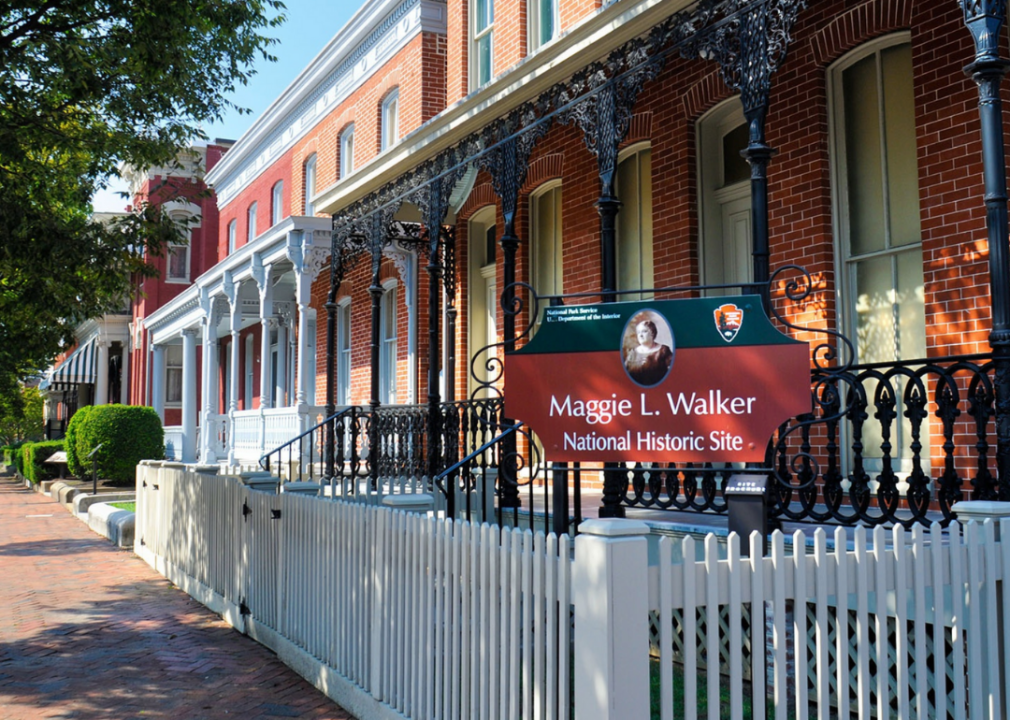
National Park Service // Wikimedia Commons
Virginia
– Sites commemorating Black history: 221 (44 with state significance, 19 with national significance)
– Maggie Lena Walker House, National Historic Site (Richmond)
– Southern Albemarle Rural Historic District (Charlottesville)
– Bruin’s Slave Jail (Alexandria)
Maggie L. Walker was a visionary with myriad interests. She was a newspaper editor, a prominent leader in community organizations, and the first Black woman to become president of a bank in the United States. Walker dedicated her life to promoting economic empowerment and transforming the scope of black businesses and education for African Americans during the Jim Crow era. Today, Walker’s home, the Maggie L. Walker National Historic Site, serves as a tribute to her legacy and provides house tours by appointment.
Joe Mabel // Wikimedia Commons
Washington
– Sites commemorating Black history: 2 (0 with state significance, 0 with national significance)
– Cooper, Frank B., Elementary School (Seattle)
– Mount Zion Baptist Church (Seattle)
Dating back to 1890, Mount Zion Baptist Church is the oldest Black church and largest Black congregation in Washington state. The architectural structure of the church even holds significance; it is designed as huts in Africa to resemble a close, community feel. The church still holds worship services on Sunday mornings and bible study during the week.
Pubdog // Wikimedia Commons
West Virginia
– Sites commemorating Black history: 34 (12 with state significance, 2 with national significance)
– East Hall (Institute)
– Samuel Starks House (Charleston)
– Barnett Hospital and Nursing School (Huntington)
Samuel Starks House was the home of distinguished community leader Samuel Starks, the first Black librarian in the United States. Starks achieved recognition through his leadership position with the African American fraternity, Knights of Pythias. During his involvement with the organization, Starks and other members helped Black business owners and entrepreneurs purchase property in order to promote land ownership. Samuel Starks House, listed on the National Register of Historic Places, was built in 1908 and had to be repaired and renovated after withstanding a severe fire in 1981.
Jim Roberts // Wikimedia Commons
Wisconsin
– Sites commemorating Black history: 7 (5 with state significance, 0 with national significance)
– Kliese Housebarn (Emmet)
– 16th Street Viaduct (Milwaukee)
– Lloyd A. Barbee House (Milwaukee)
Lloyd A. Barbee House is home to attorney and civil rights activist Lloyd Augusta Barbee, who won the seat in the Wisconsin State Assembly in 1964 and served as the only Black man in the Wisconsin state legislature until 1977. This single-family, Victorian-style home, built in 1890, was purchased by Barbee in 1966 and he lived there until 1980. In his lifetime, Barbee tackled various topics like the Fair Housing Act and pushed for Black and multicultural history to be taught in Wisconsin’s public schools.
